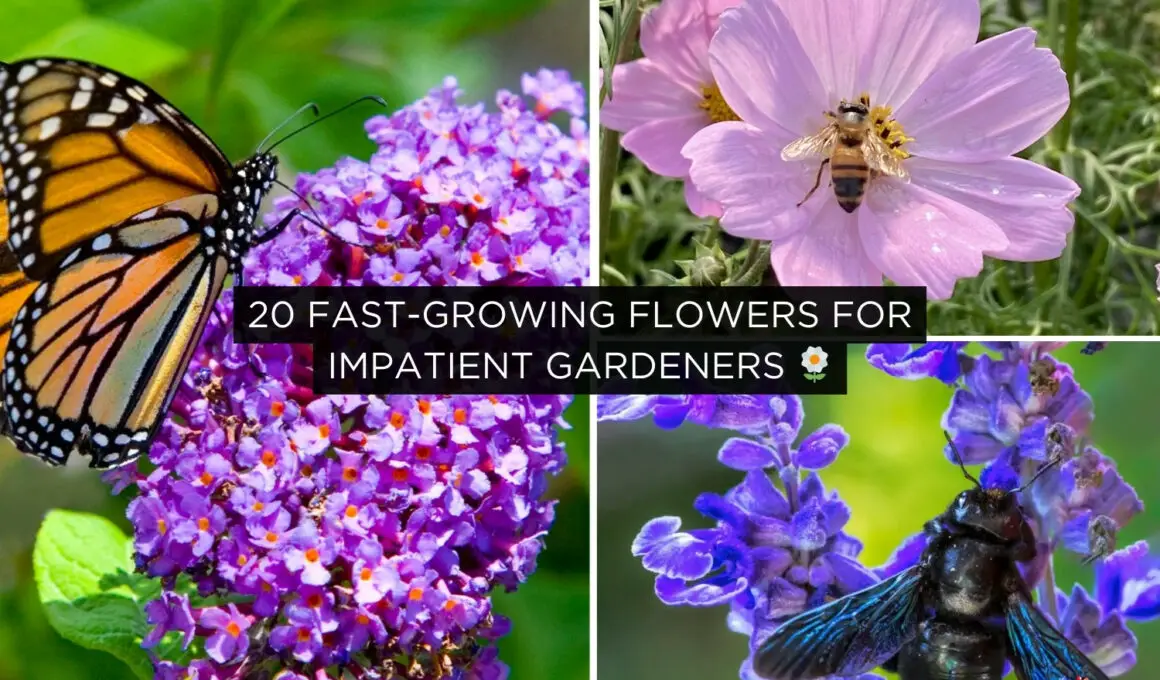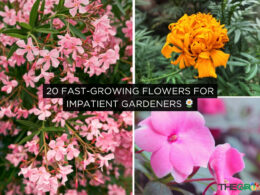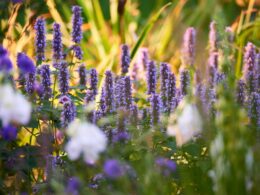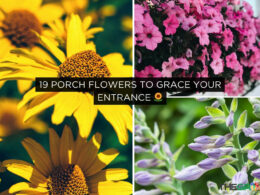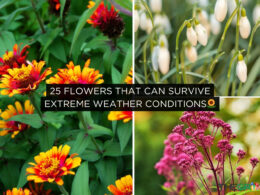In This Article Show
With over 13 years of hands-on experience in gardening, I’ve come to appreciate the pivotal role pollinators play in our gardens. Today, we’re focusing on a topic close to many gardeners’ hearts: attracting hummingbirds, bees, and butterflies to your garden. By choosing the right flowers, you can turn your garden into a haven for these beneficial pollinators.
Pollinators are not just beautiful creatures to watch; they are vital to the health of our ecosystems and crucial for the pollination of many plants, including those that provide us with fruits, vegetables, and seeds. A garden buzzing with these creatures is a sign of a healthy, thriving space.
In this post, we’ll explore 50 flowers that are especially attractive to hummingbirds, bees, and butterflies. Each of these flowers has been chosen for its ability to draw in these creatures, ensuring your garden is a lively, colorful, and productive space. Whether you’re an experienced gardener or just starting, these plant recommendations will help you create a more pollinator-friendly garden.
Flowers to Attract Hummingbirds
Crafting a garden that becomes a haven for hummingbirds involves understanding what captivates these energetic birds. It’s all about the nectar: this is the hummingbird’s main source of fuel to power their incredibly fast wing movements. To transform your garden into a preferred stopover for hummingbirds, consider these flowers known for their allure:
1. Bee Balm (Monarda)

This plant is a spectacle in any garden, with its radiant red, pink, or purple flowers forming a crown-like shape atop tall stems. Bee Balm is a powerhouse of nectar, making it a hummingbird’s delight. Its aromatic leaves are a bonus, offering a pleasant scent and medicinal properties.
2. Cardinal Flower (Lobelia cardinalis)
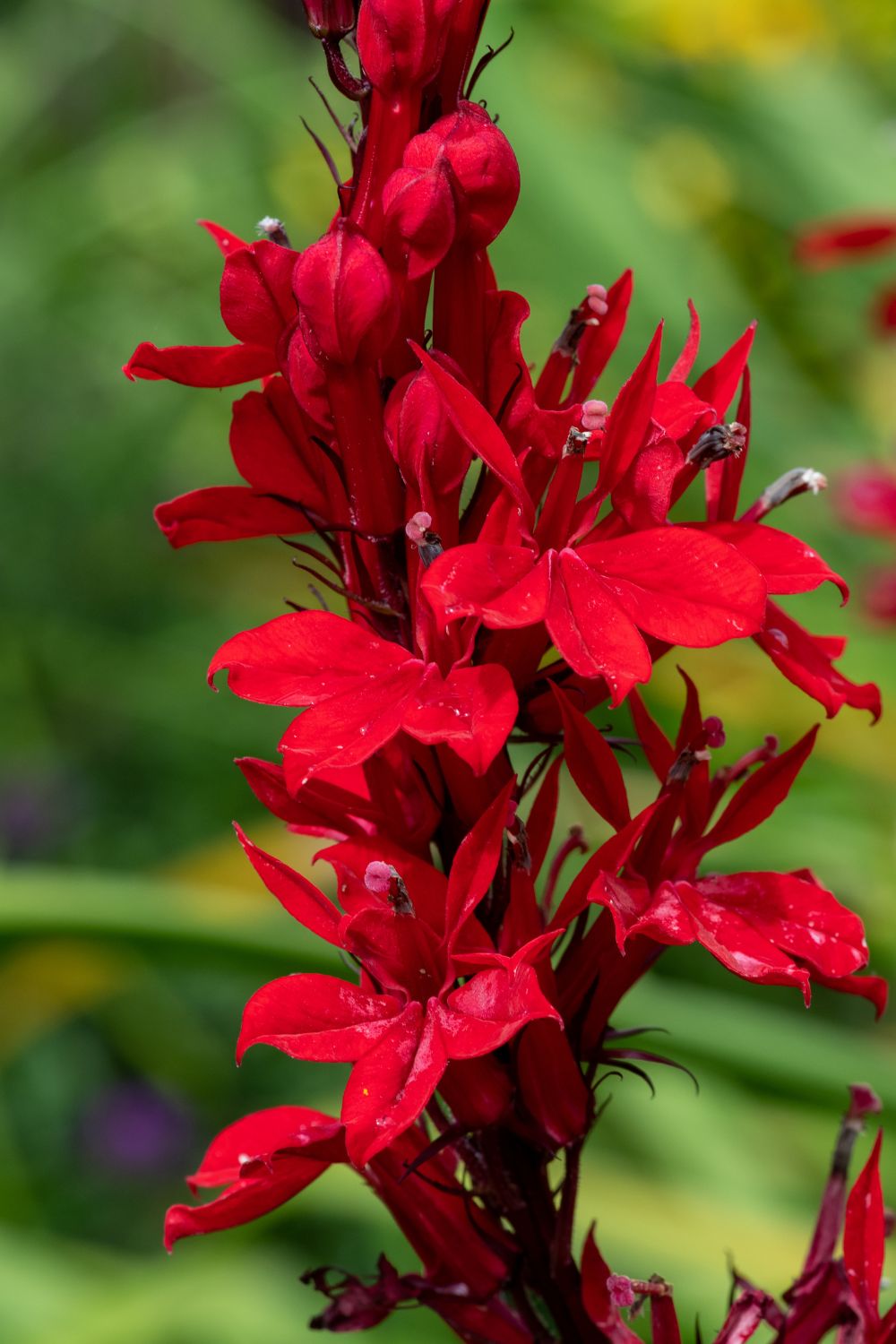
Named for the vivid red robes of Roman Catholic Cardinals, the Cardinal Flower stands out with its tall spikes of intense red flowers. It thrives in moist environments, making it a stunning addition to any water garden or damp area in need of color and life.
Get Gardening For Beginners
Our new EBOOK shows newcomers and green thumbs alike a step by step guide to growing the garden of their dreams.
3. Zinnia (Zinnia spp.)
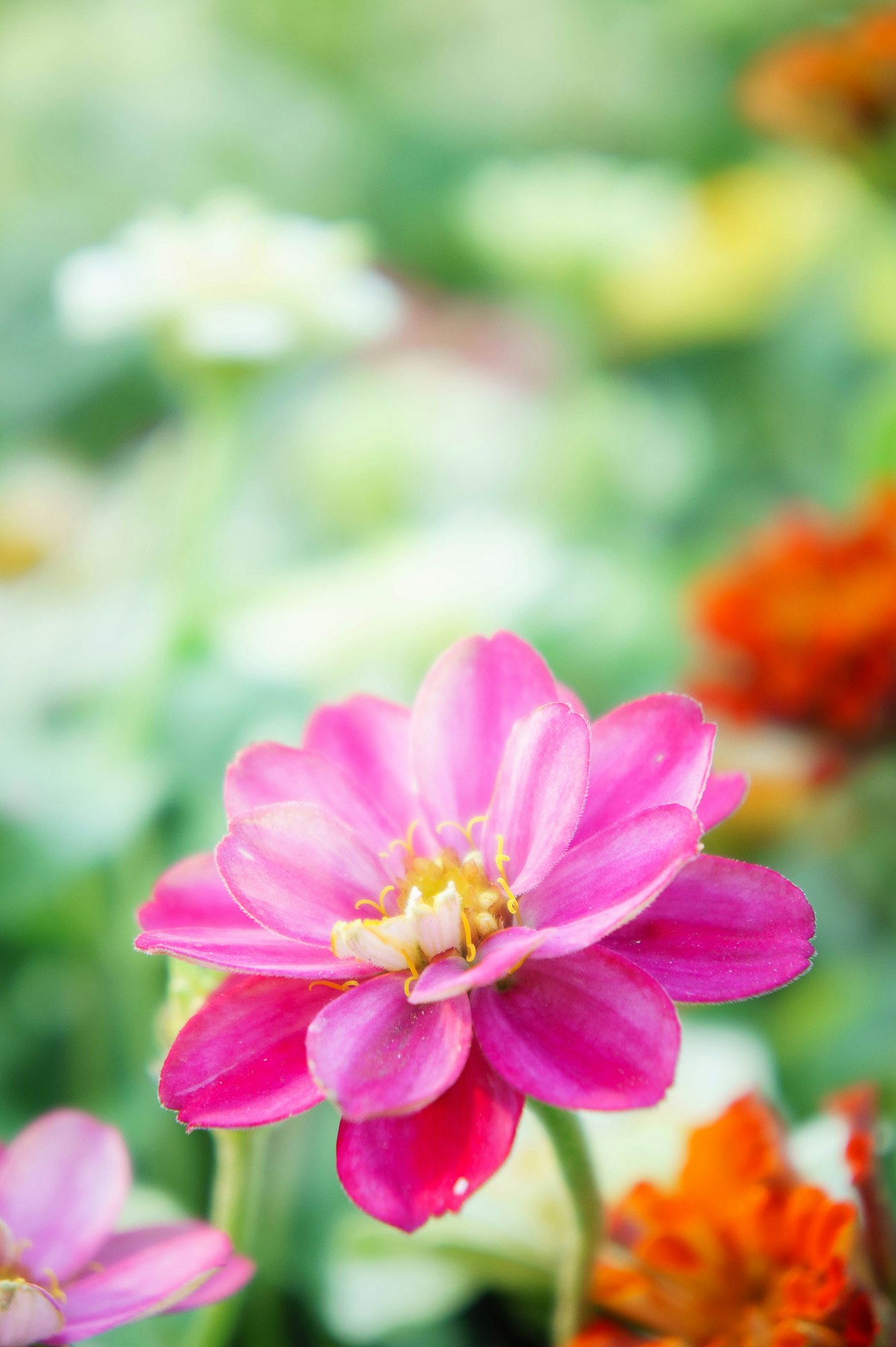
Zinnias bring a kaleidoscope of color to the garden, ranging from bright red to sunny yellow, with their easy-to-grow nature making them a favorite among gardeners. Their robust, daisy-like flowers provide a plentiful supply of nectar, inviting hummingbirds to feast.
4. Salvia (Salvia spp.)
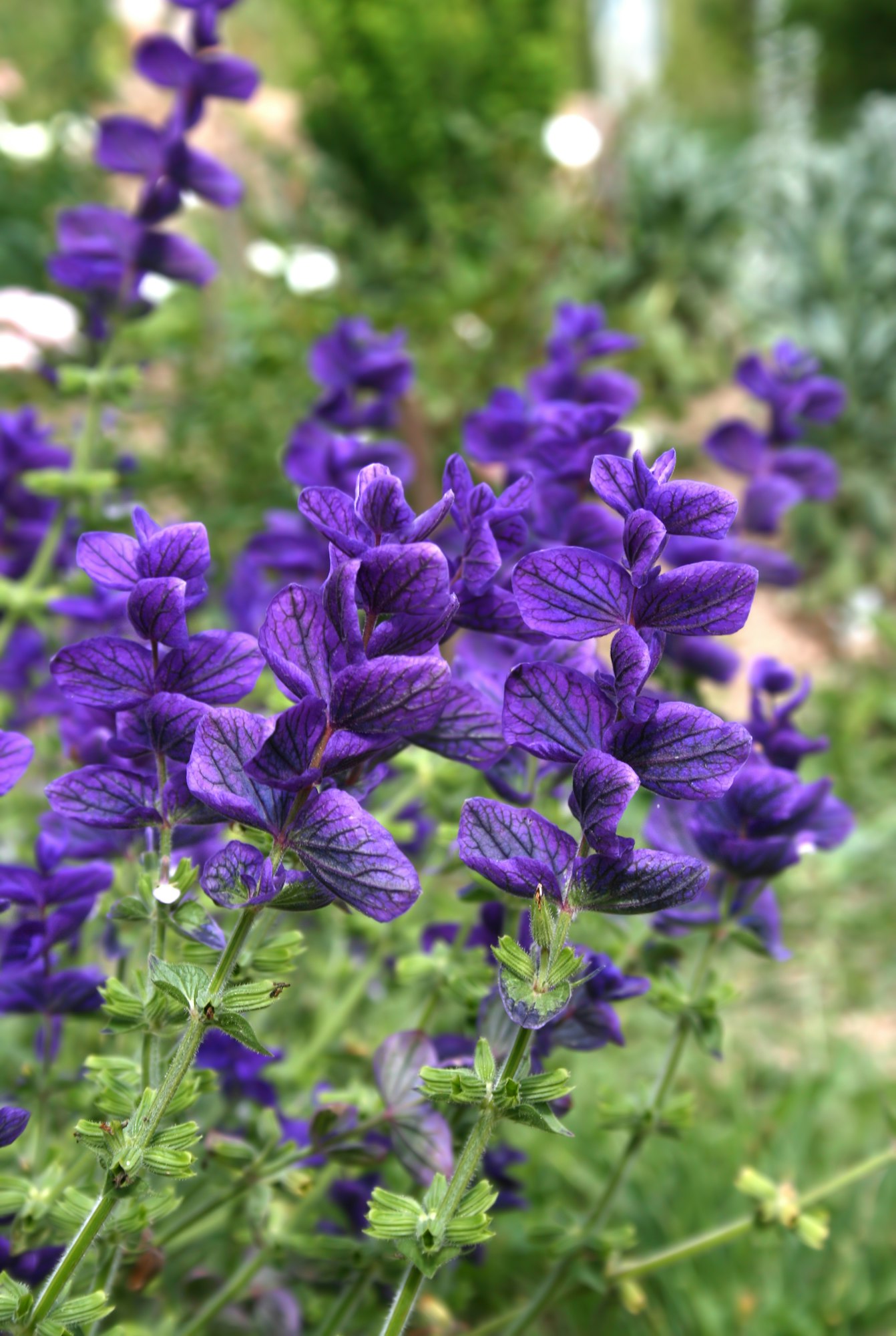
With its striking tubular flowers, Salvia is a magnet for hummingbirds. The flowers can be found in a variety of colors, including blues, purples, and reds, adding a vibrant splash of color to the garden while serving as a rich nectar source.
5. Fuchsia (Fuchsia spp.)
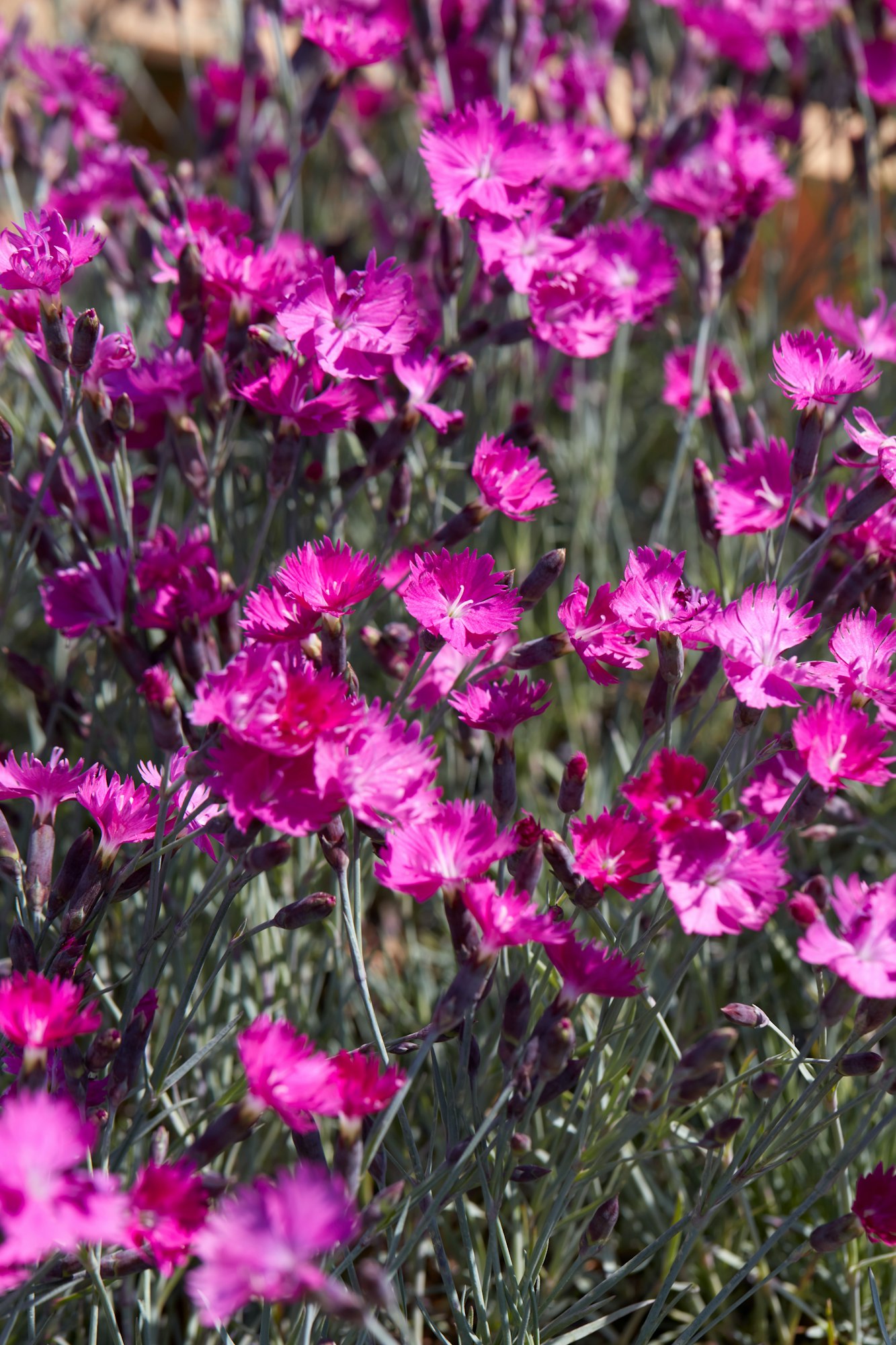
Fuchsia’s unique, dangling blooms are a spectacle, with their two-tone colors and graceful, lantern-like shape. They are particularly adept at attracting hummingbirds, who are drawn to their nectar-rich flowers.
6. Lantana (Lantana camera)
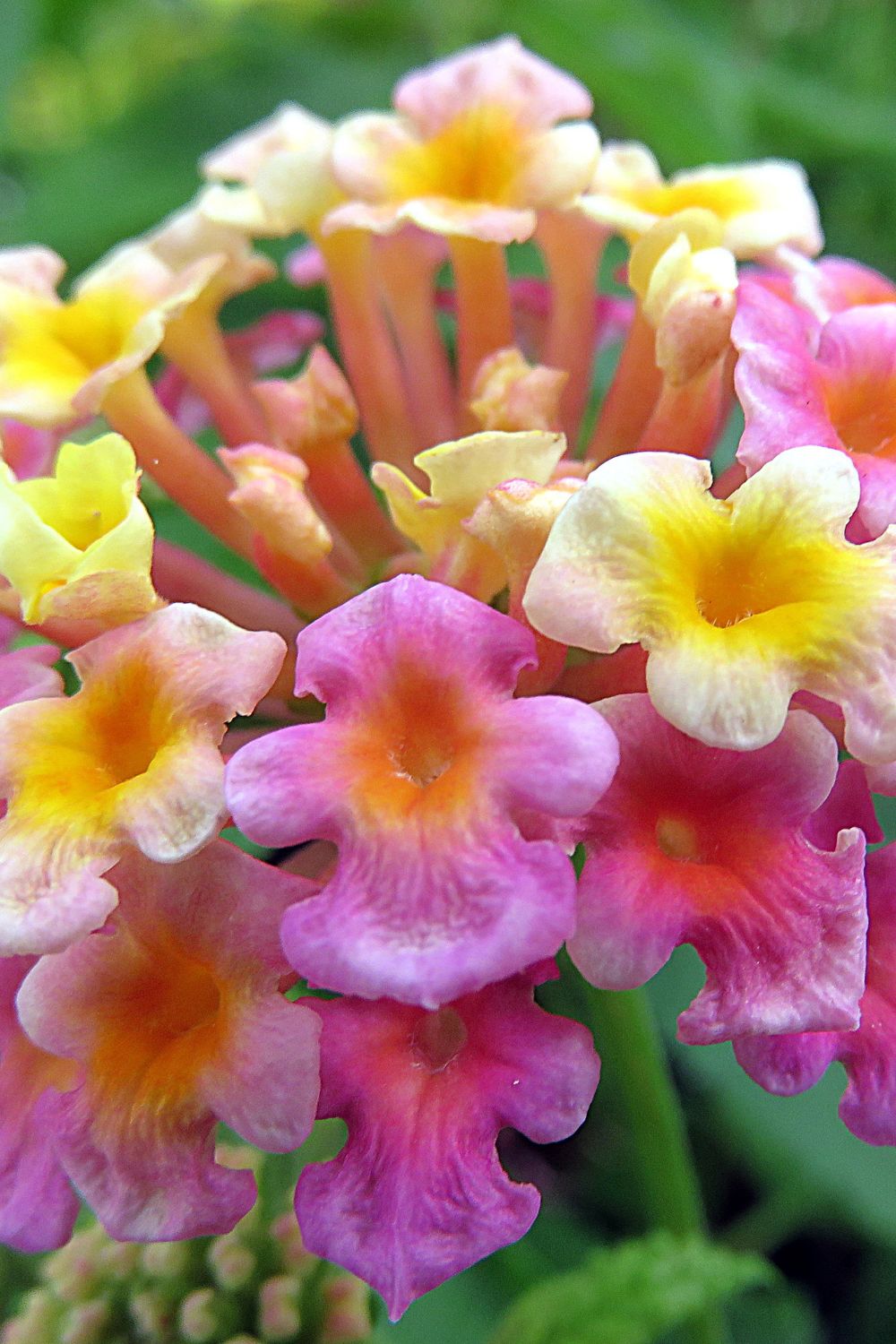
The sun-loving Lantana produces clusters of small, brightly colored flowers that range from yellow to red, creating a mosaic of color that is as attractive to gardeners as it is to hummingbirds.
7. Petunia (Petunia spp.)
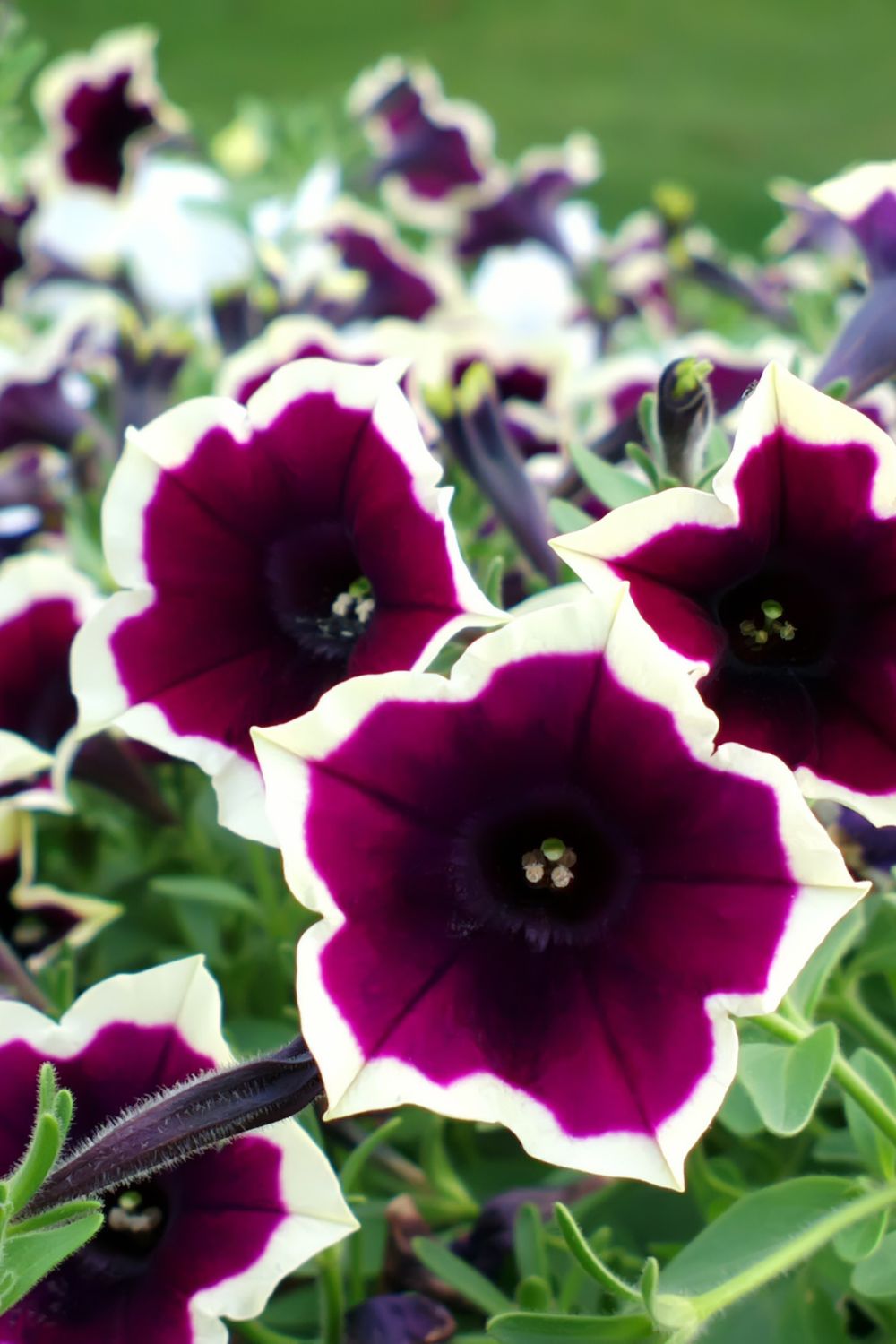
Petunias offer a broad palette of colors for the garden, from deep purples to vibrant reds, and their wide, open flowers are perfect for hummingbirds to dip into for nectar.
8. Trumpet Vine (Campsis radicans)
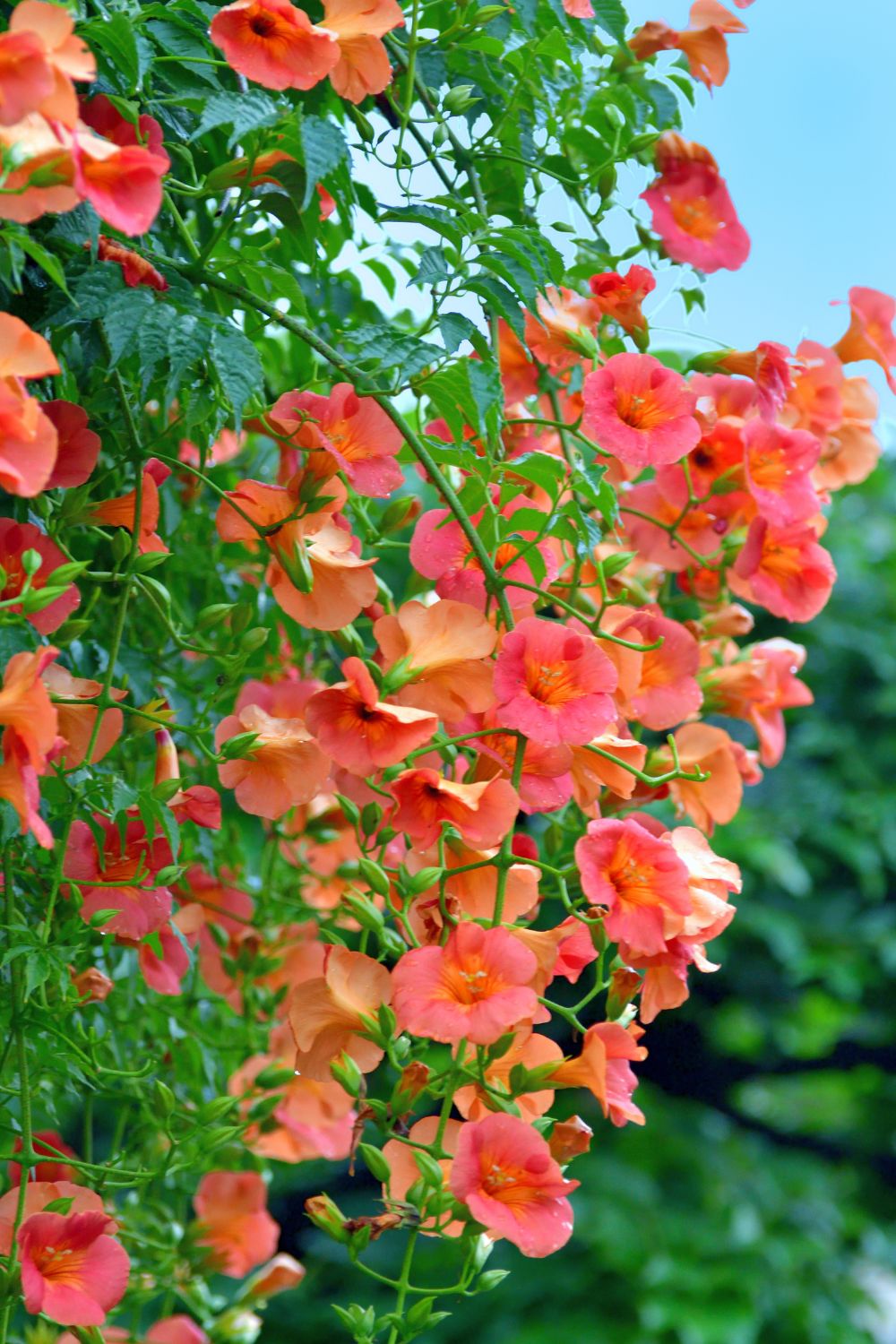
As its name suggests, the Trumpet Vine features large, trumpet-shaped flowers, typically in shades of orange to red, that are not only visually stunning but also a favorite among hummingbirds for their nectar and shelter.
9. Columbine (Aquilegia spp.)

With its elegant, bell-shaped flowers and long spurs, Columbine is both a visual treat and a nectar-rich spot for hummingbirds. Its flowers come in a variety of colors, adding a delicate beauty to the shaded parts of the garden.
Get Gardening For Beginners
Our new EBOOK shows newcomers and green thumbs alike a step by step guide to growing the garden of their dreams.
10. Penstemon (Penstemon spp.)
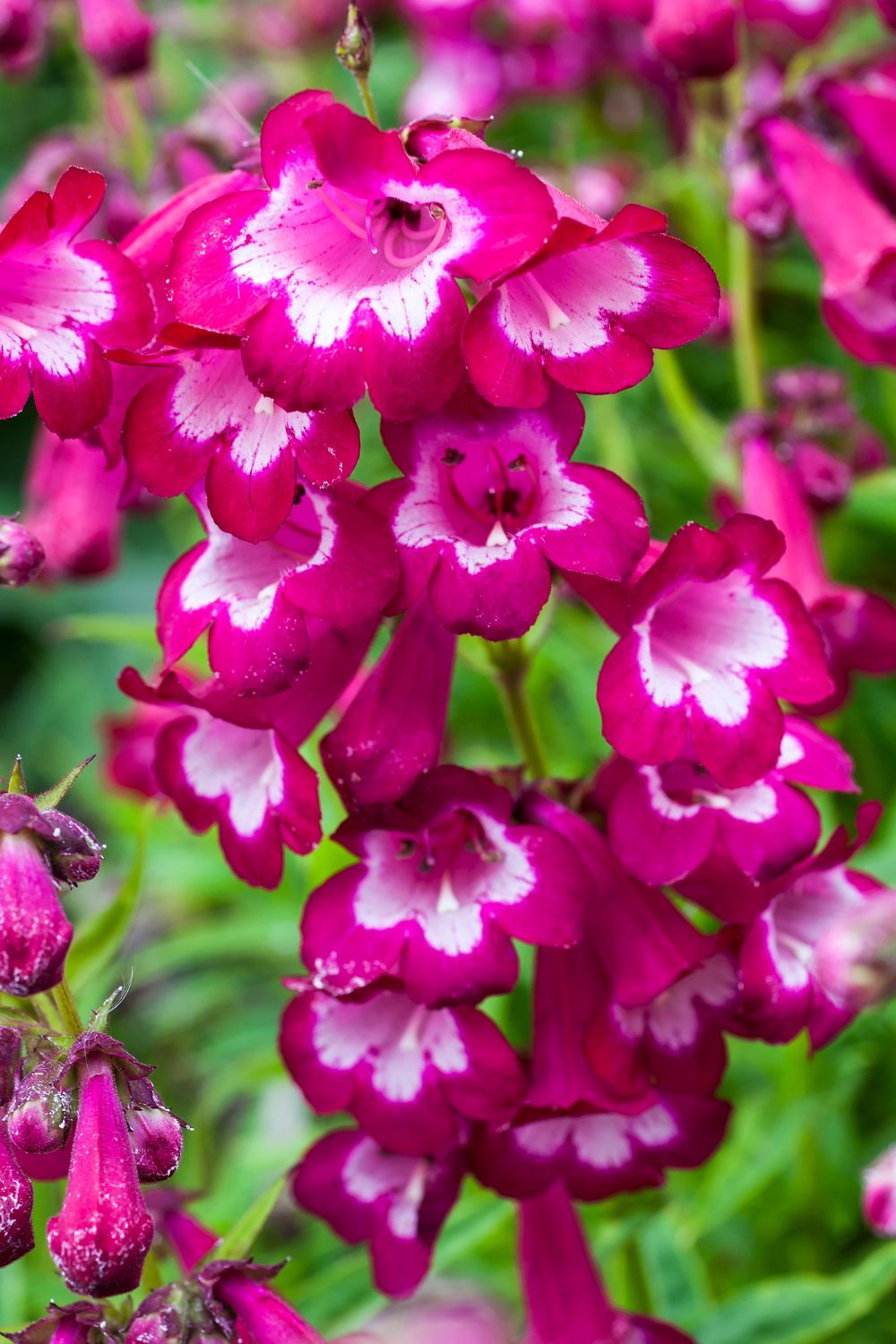
Also known as beardtongue, Penstemons are beloved for their tubular flowers, which come in hues ranging from soft pinks to vivid reds. They stand out not just for their beauty but for their ability to attract hummingbirds with their abundant nectar.
Flowers to Attract Bees
Bees are particularly attracted to flowers that are open and accessible, allowing them to easily reach the pollen and nectar. Here’s a selection of flowers known for their ability to attract bees, each with its unique appeal.
11. Lavender (Lavandula spp.)
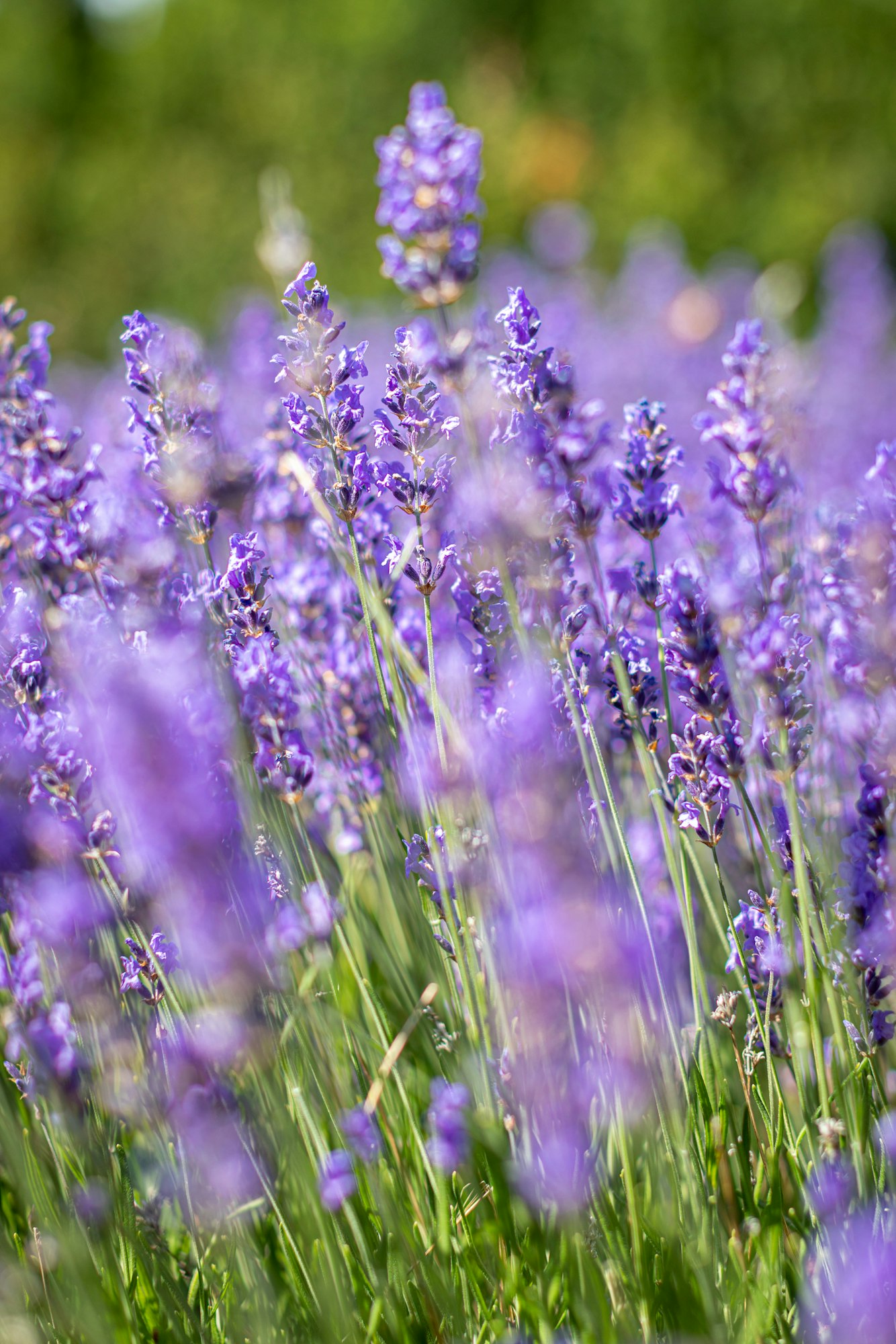
Lavender is a bee’s dream, with its fragrant, purple spikes offering an abundant source of nectar. This hardy plant thrives in sunny spots and well-drained soil, adding both color and scent to your garden while supporting bee populations.
12. Sunflower (Helianthus annuus)
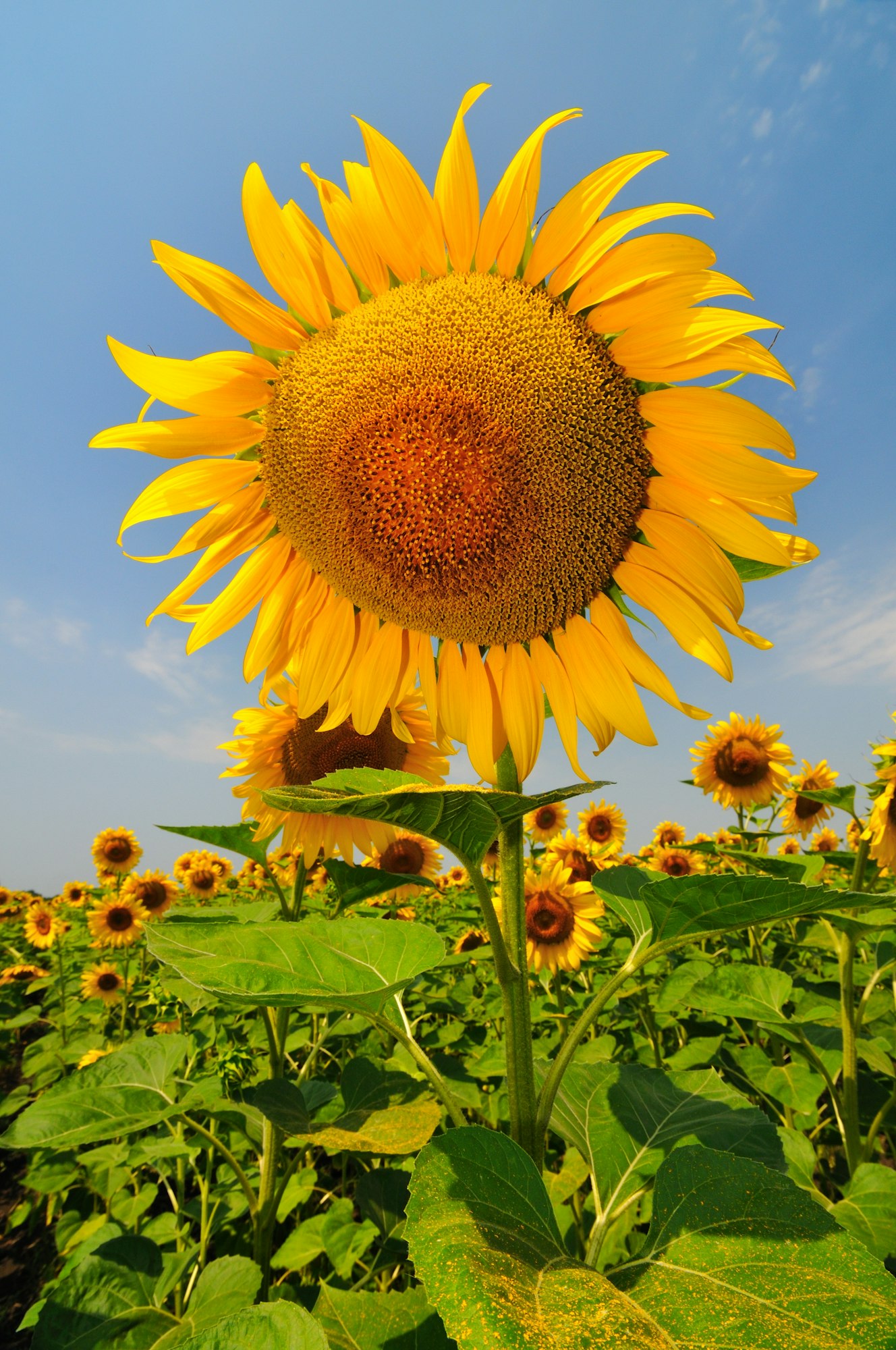
With their large, open faces, sunflowers are not just a symbol of summer but a beacon for bees. These towering plants provide plentiful pollen and nectar, making them a must-have in any bee-friendly garden.
13. Borage (Borago officinalis)
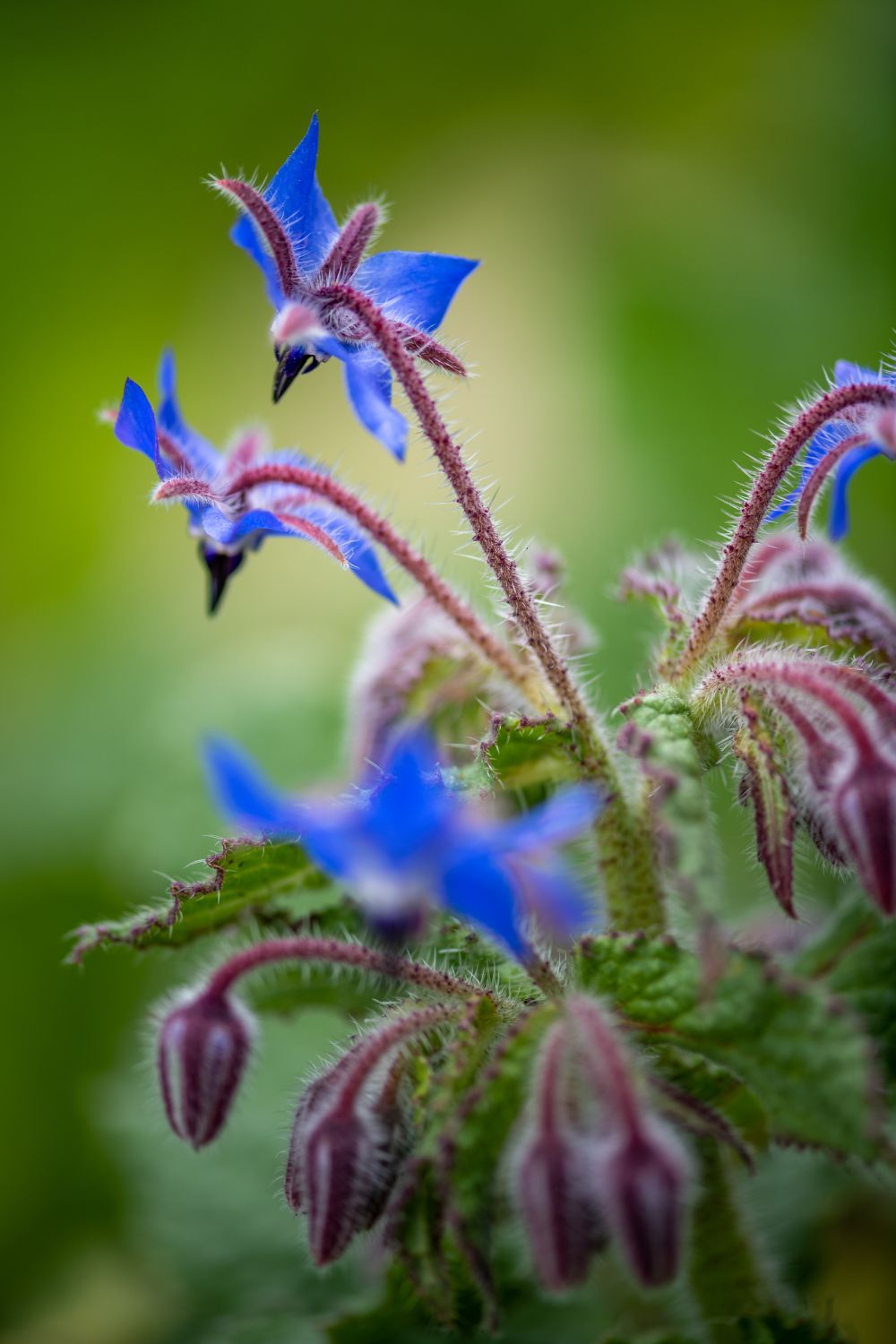
Known as a “bee’s bread,” borage produces star-shaped, blue flowers that are rich in nectar. This easy-to-grow herb can reseed itself, offering a continual feast for bees year after year.
14. Crocus (Crocus spp.)
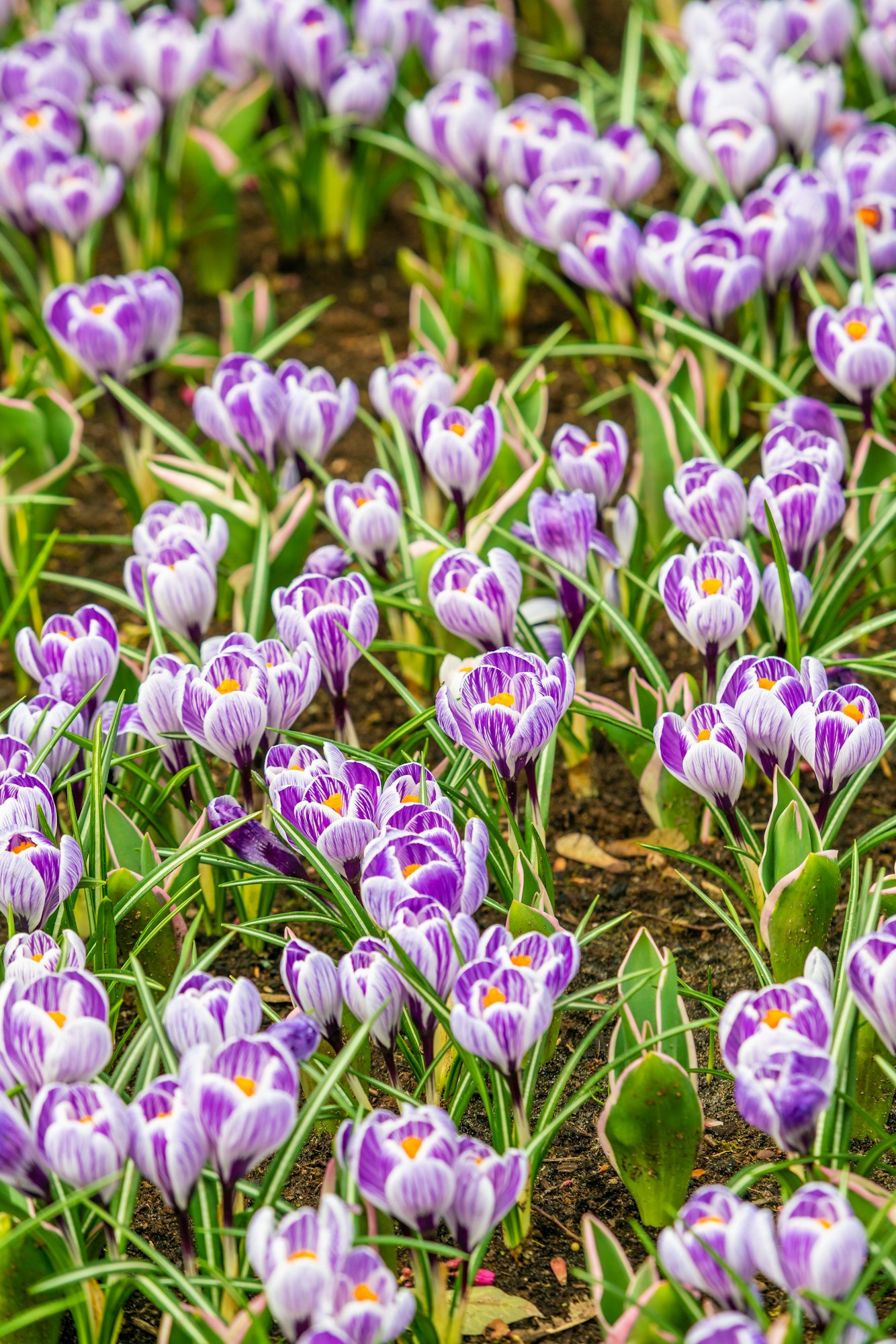
Crocuses are among the first flowers to bloom in spring, providing an early source of nectar and pollen for bees waking from hibernation. Planting these bulbs in your garden ensures bees have access to food at a critical time.
15. Foxglove (Digitalis purpurea)
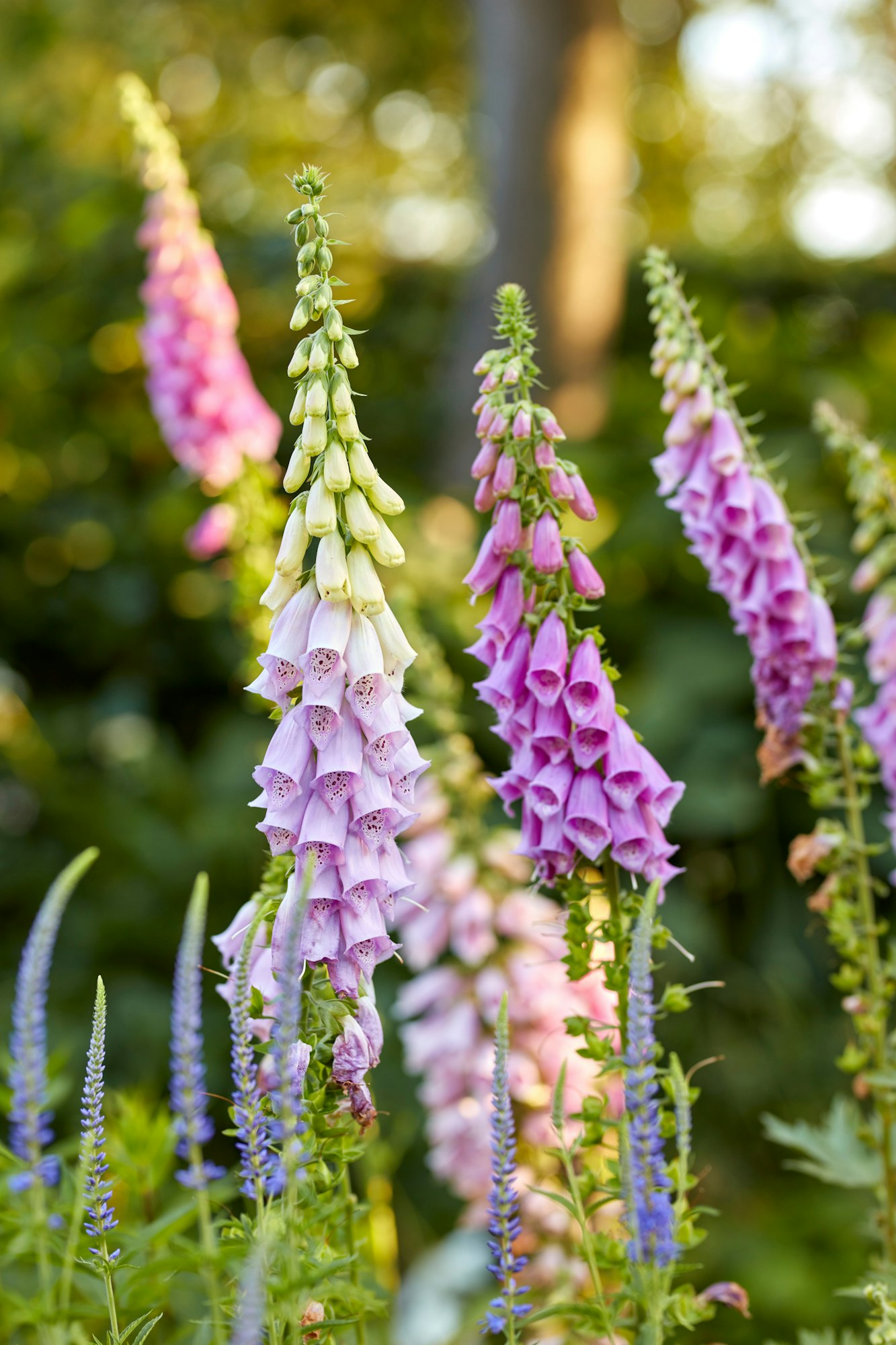
The tall spikes of tubular flowers make foxglove a favorite for bees, offering shelter and deep wells of nectar. While beautiful, it’s important to note that foxglove is toxic if ingested, so caution is advised in gardens with pets and children.
16. Hyssop (Hyssopus officinalis)
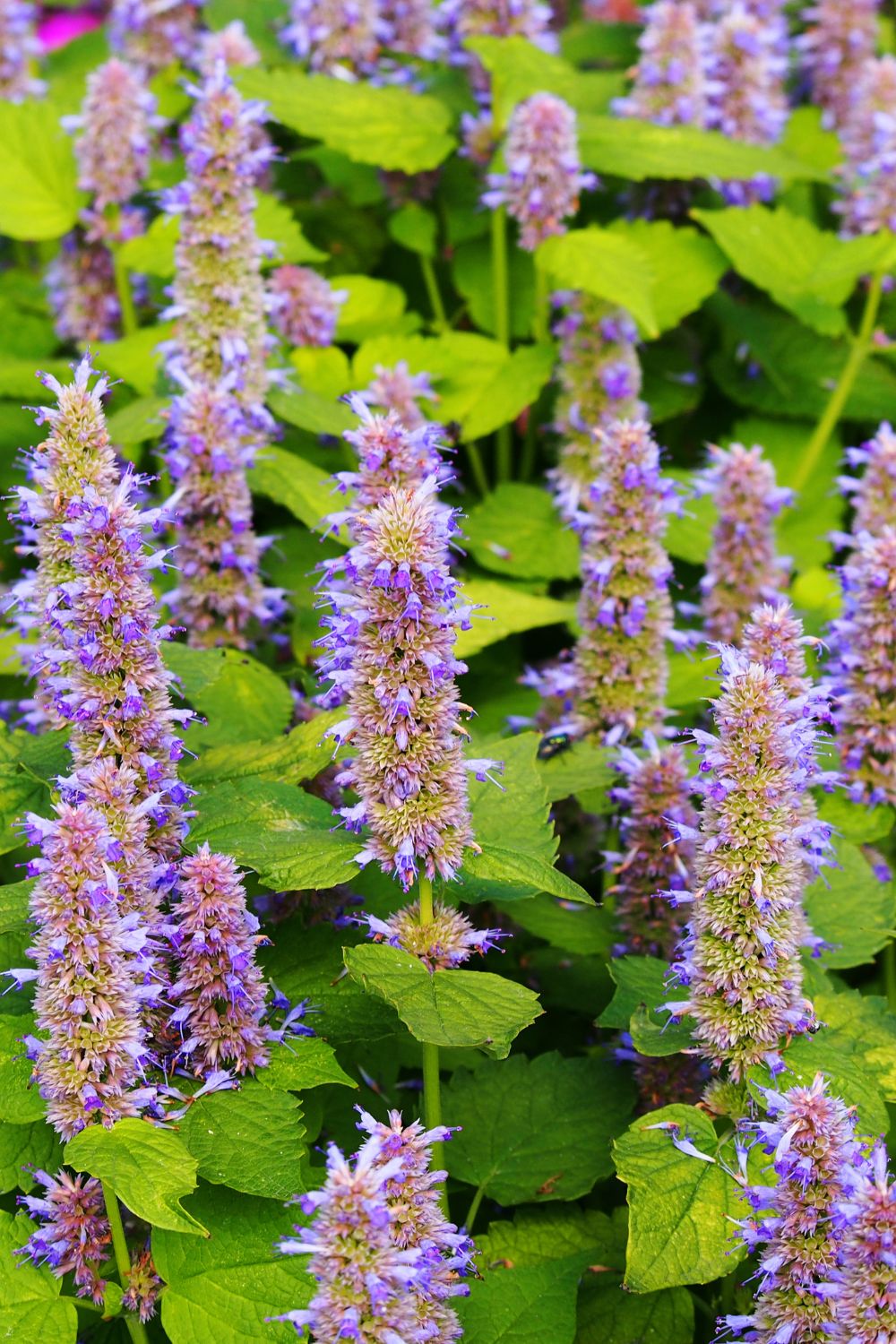
This aromatic herb attracts bees with its spikes of blue, pink, or white flowers. Hyssop is particularly loved by bees for its rich nectar, and its leaves can be used in teas and cooking.
17. Coneflower (Echinacea spp.)
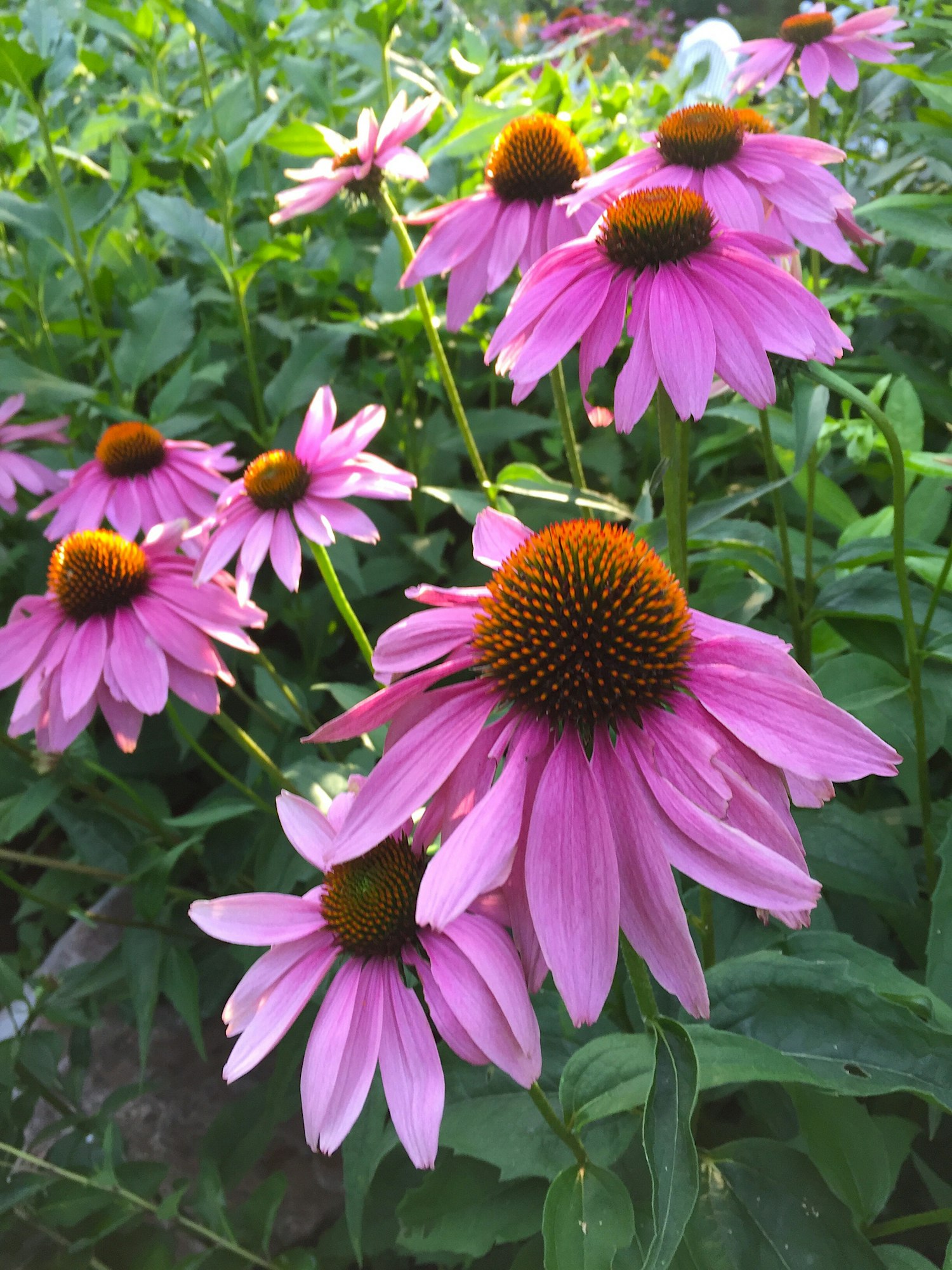
Coneflowers are not only beautiful with their vibrant petals and prominent central cones, but they are also a great source of nectar for bees. Their open structure allows easy access to both nectar and pollen.
18. Cosmos (Cosmos bipinnatus)
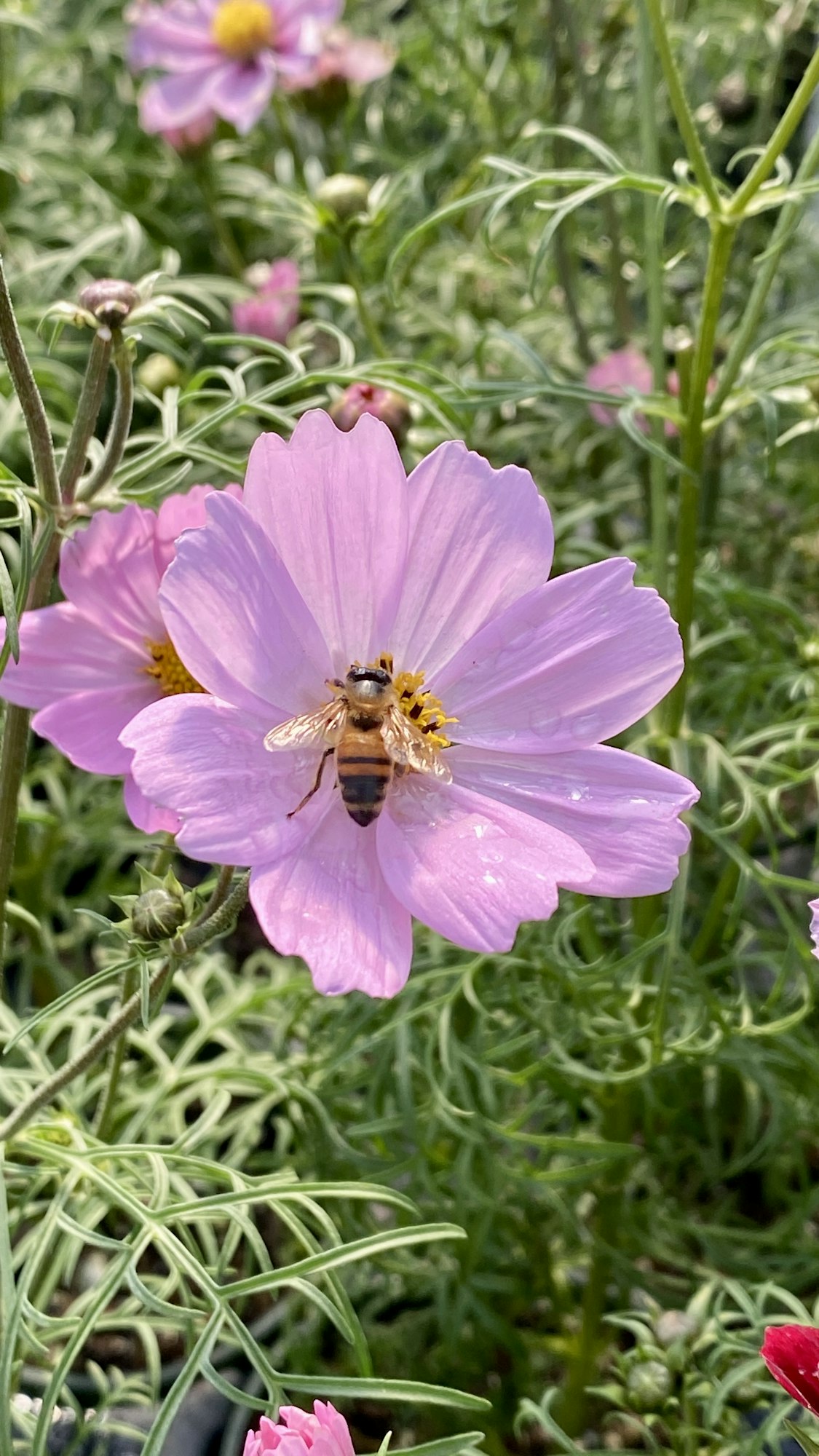
With their daisy-like flowers and feathery foliage, cosmos are a hit with bees. These annuals bloom profusely and come in shades of pink, purple, and white, providing a continuous source of nectar throughout the summer.
19. Catmint (Nepeta spp.)
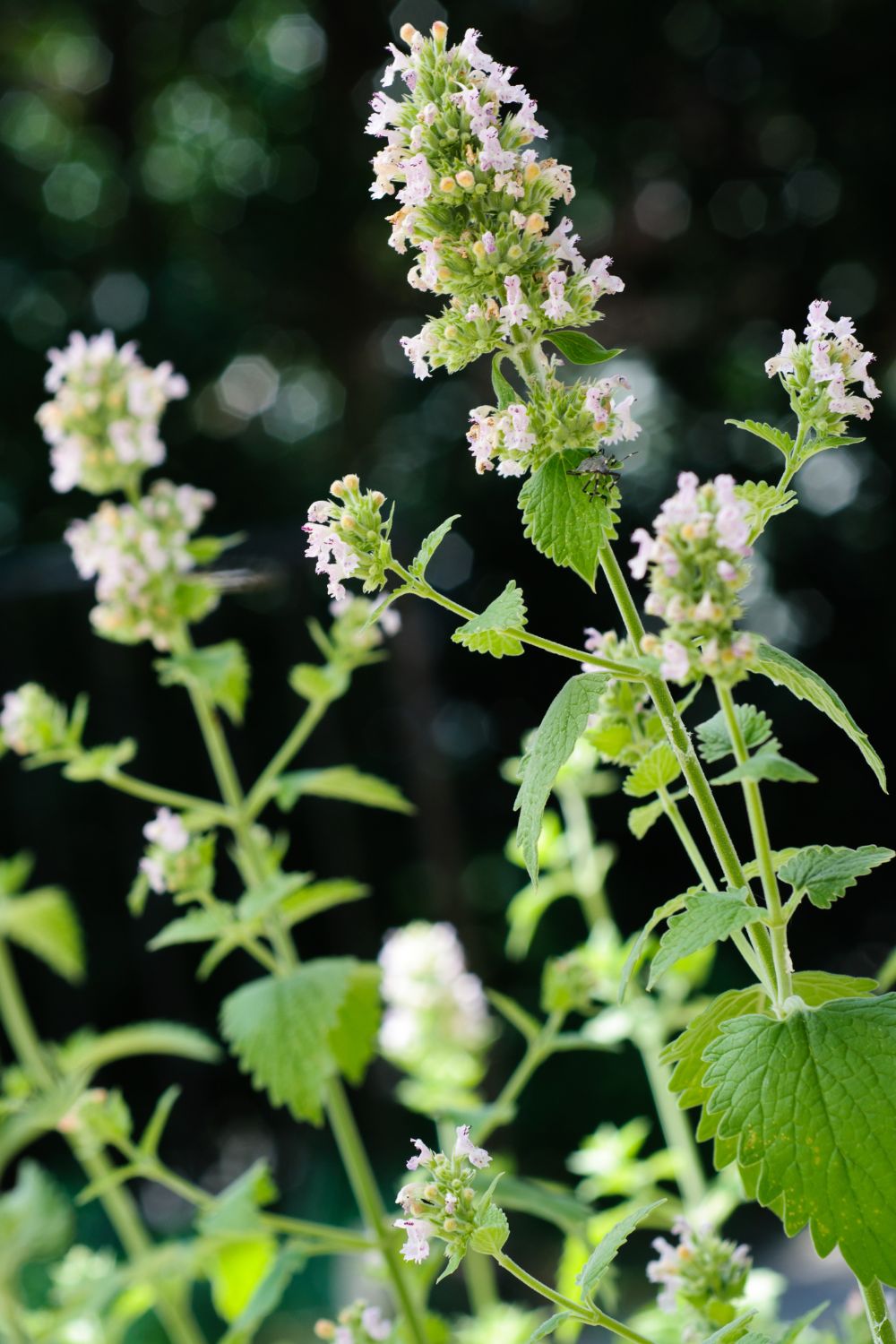
Catmint produces clusters of lavender-blue flowers that bees find irresistible. This hardy perennial is easy to grow and care for, making it a favorite among gardeners and bees alike.
20. Goldenrod (Solidago spp.)
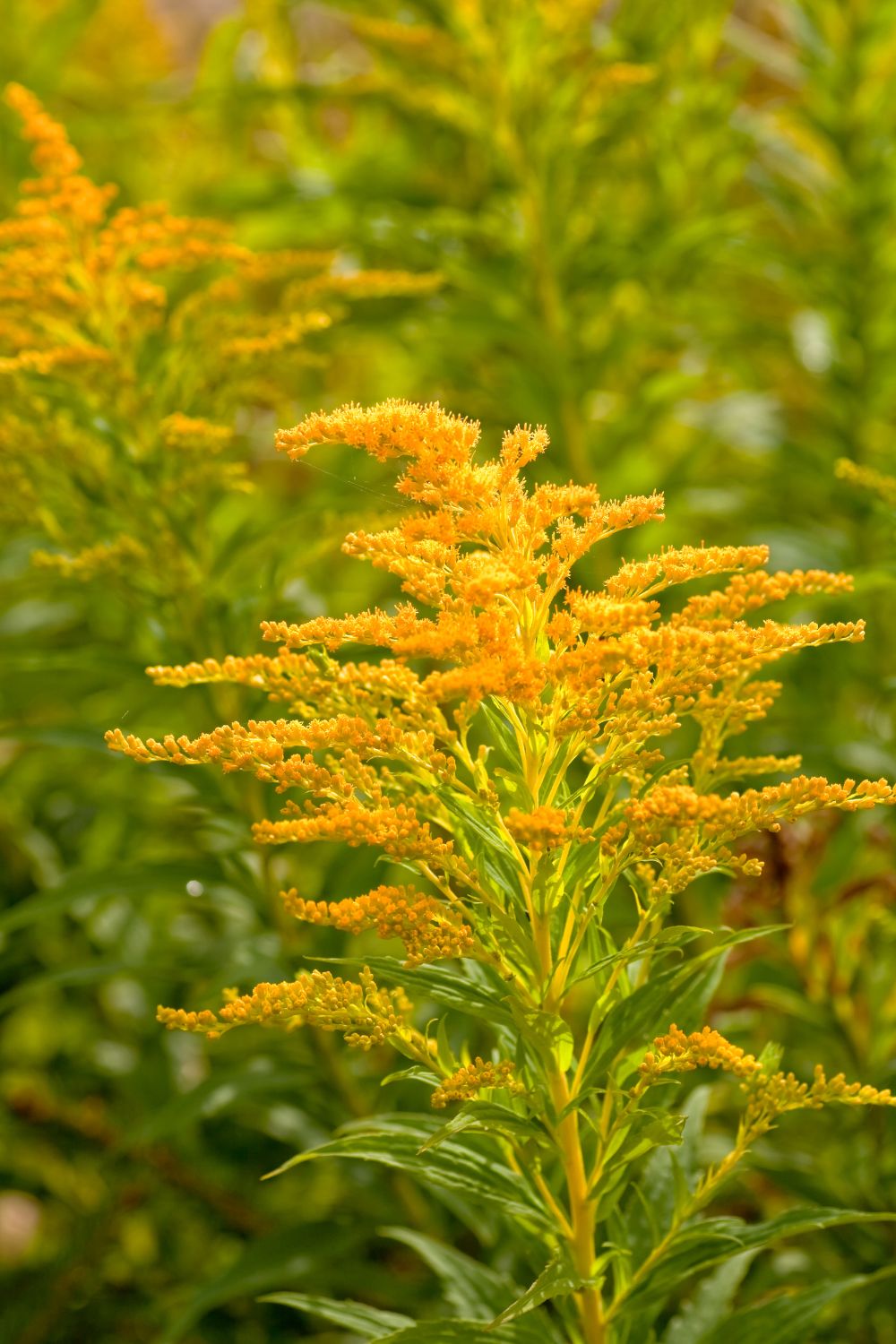
Often unjustly blamed for hay fever, goldenrod is a vital source of late-season nectar for bees. Its bright yellow flowers light up the fall garden, offering bees nourishment as they prepare for winter.
Flowers to Attract Butterflies
To create a butterfly haven, consider these nectar-rich flowers, known for their ability to attract butterflies with their colors, shapes, and scents:
21. Milkweed (Asclepias spp.)
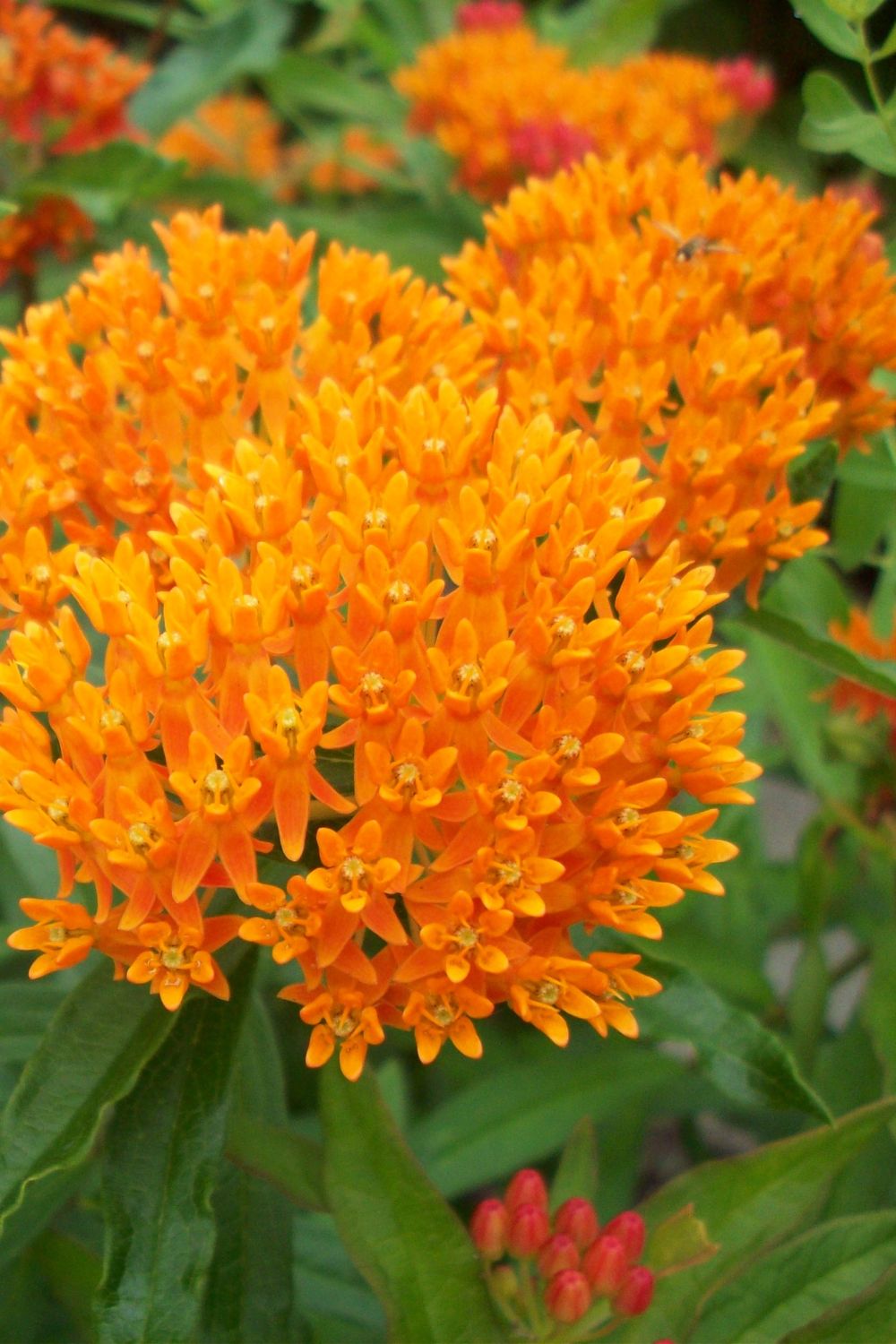
Essential for the monarch butterfly’s lifecycle, milkweed is more than just a food source; it’s a nursery for their eggs. The vibrant clusters of flowers offer ample nectar to adult butterflies, making it a must-have in any butterfly garden.
22. Butterfly Bush (Buddleja davidii)
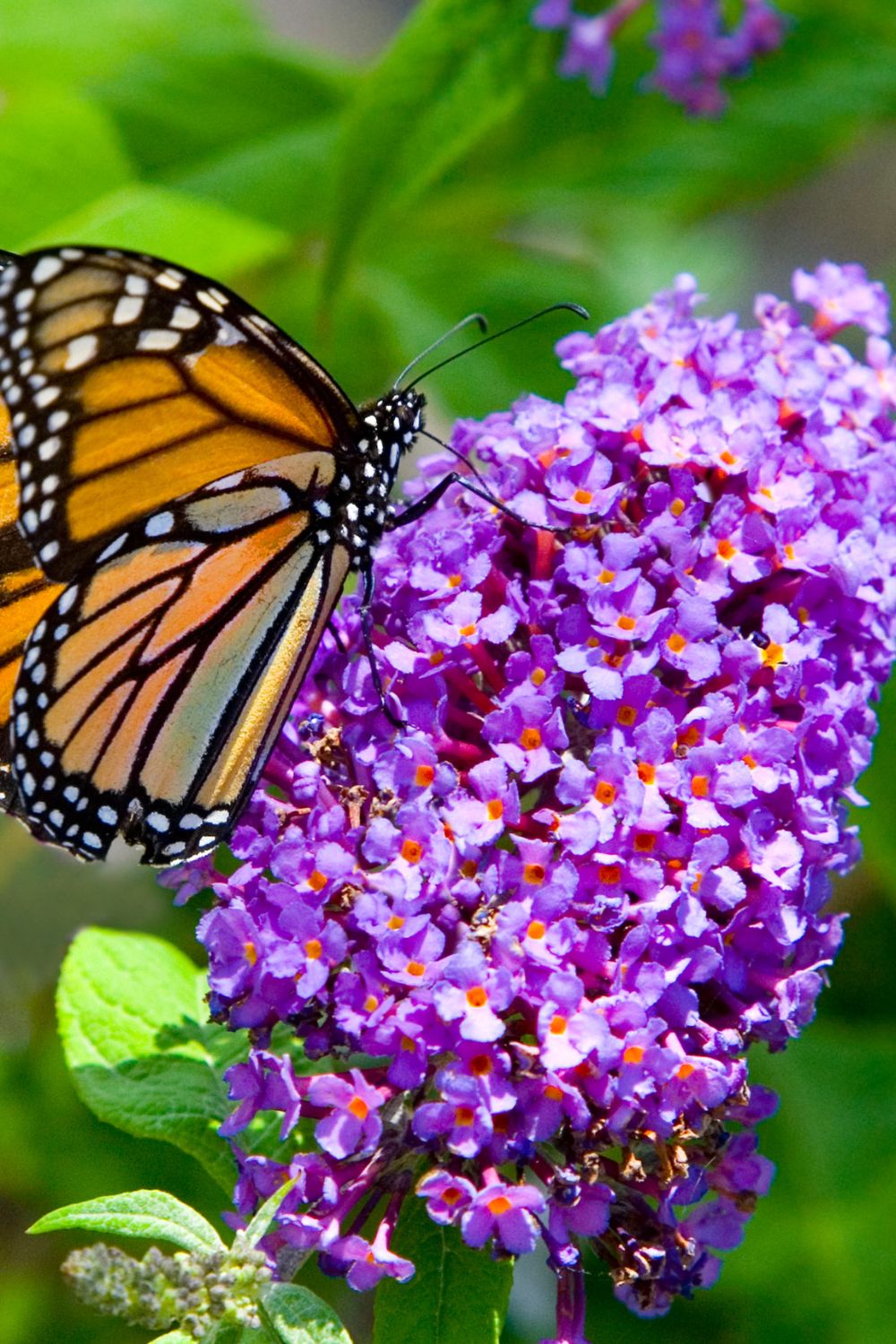
True to its name, the butterfly bush attracts butterflies in droves, thanks to its long, fragrant flower spikes. Available in various colors, it provides a feast for the eyes and nourishment for butterflies.
23. Aster (Aster spp.)
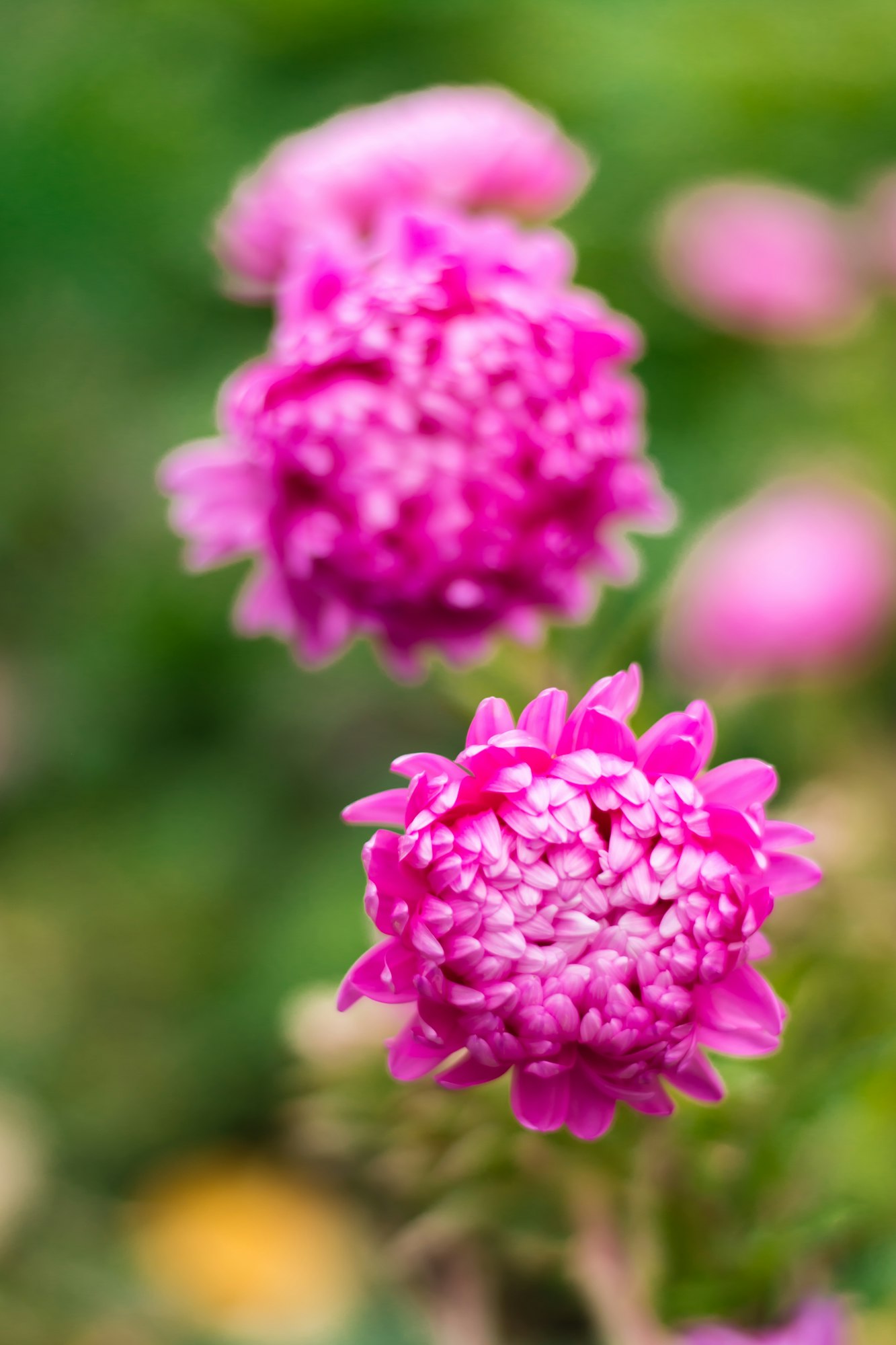
Asters bloom in late summer to fall, providing a critical nectar source when many other flowers have faded. Their daisy-like blooms are not only beautiful but also a favorite among butterflies.
24. Joe Pye Weed (Eutrochium purpureum)
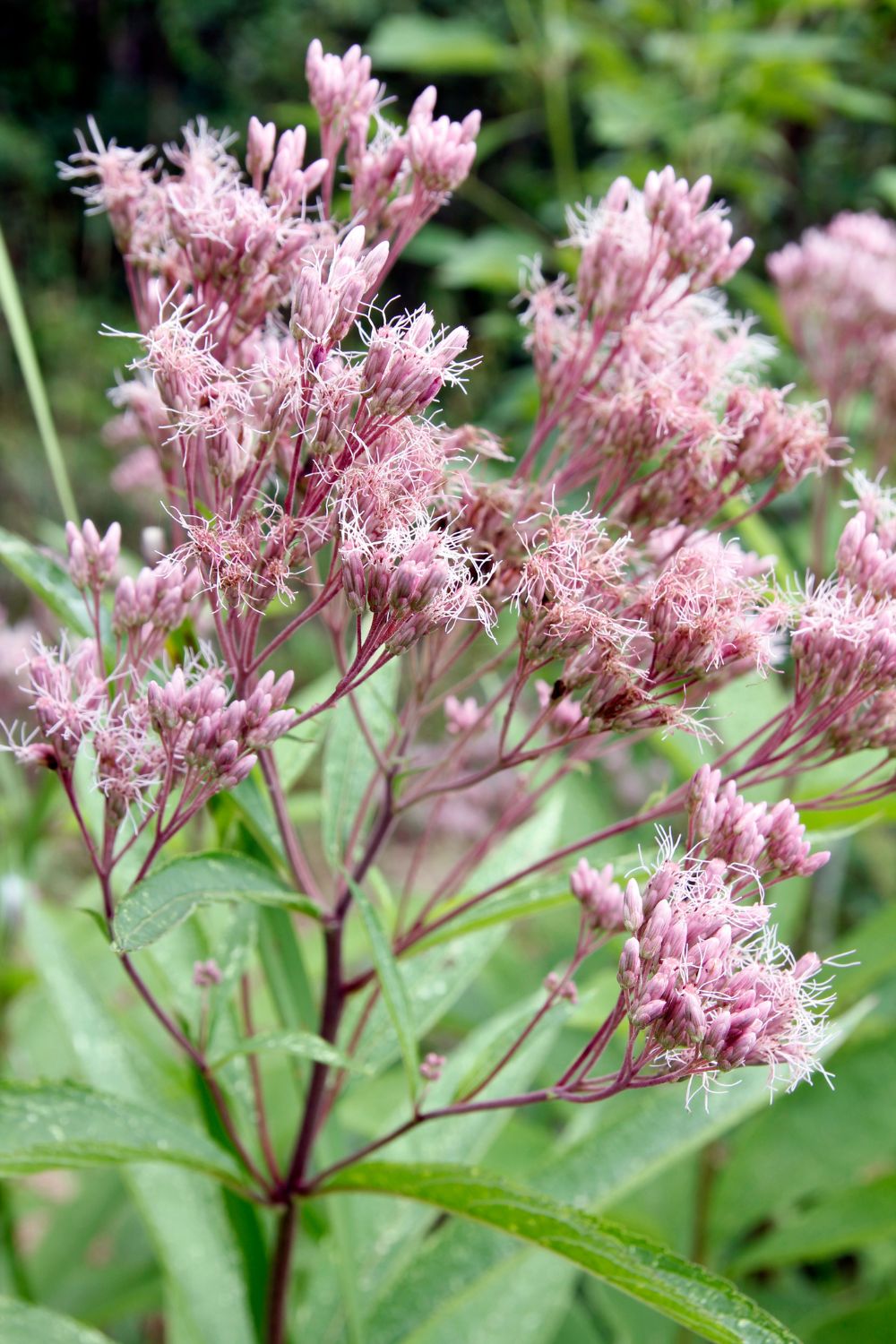
With its tall, fluffy pink or purple flower heads, Joe Pye Weed stands out in the butterfly garden. It thrives in moist soil, attracting butterflies with its nectar-rich blooms.
25. Phlox (Phlox paniculata)
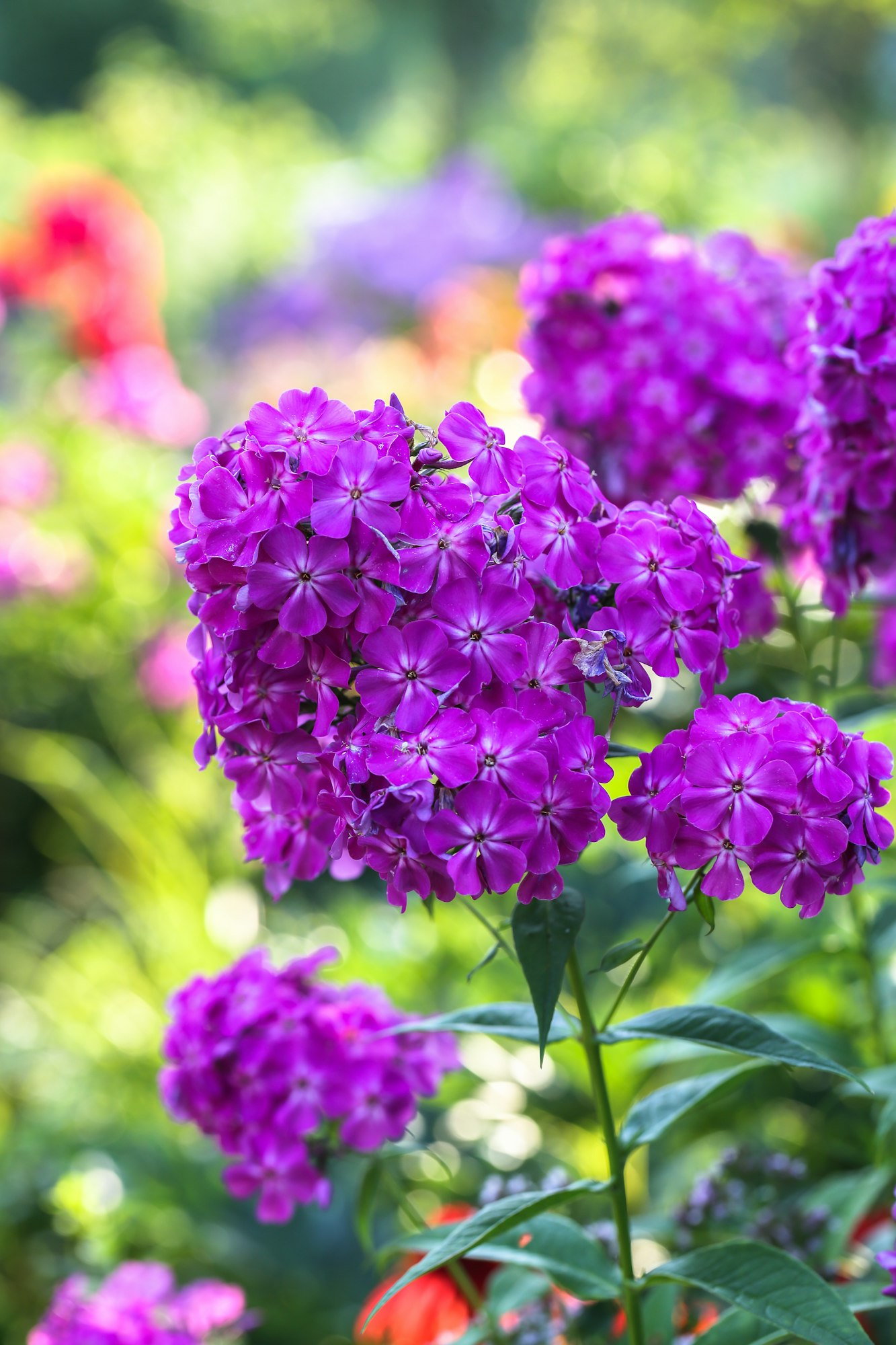
Phlox offers clusters of fragrant flowers in a range of colors. Its blooms provide a generous platform for butterflies to land and feed, making it a garden favorite.
26. Black-eyed Susan (Rudbeckia hirta)
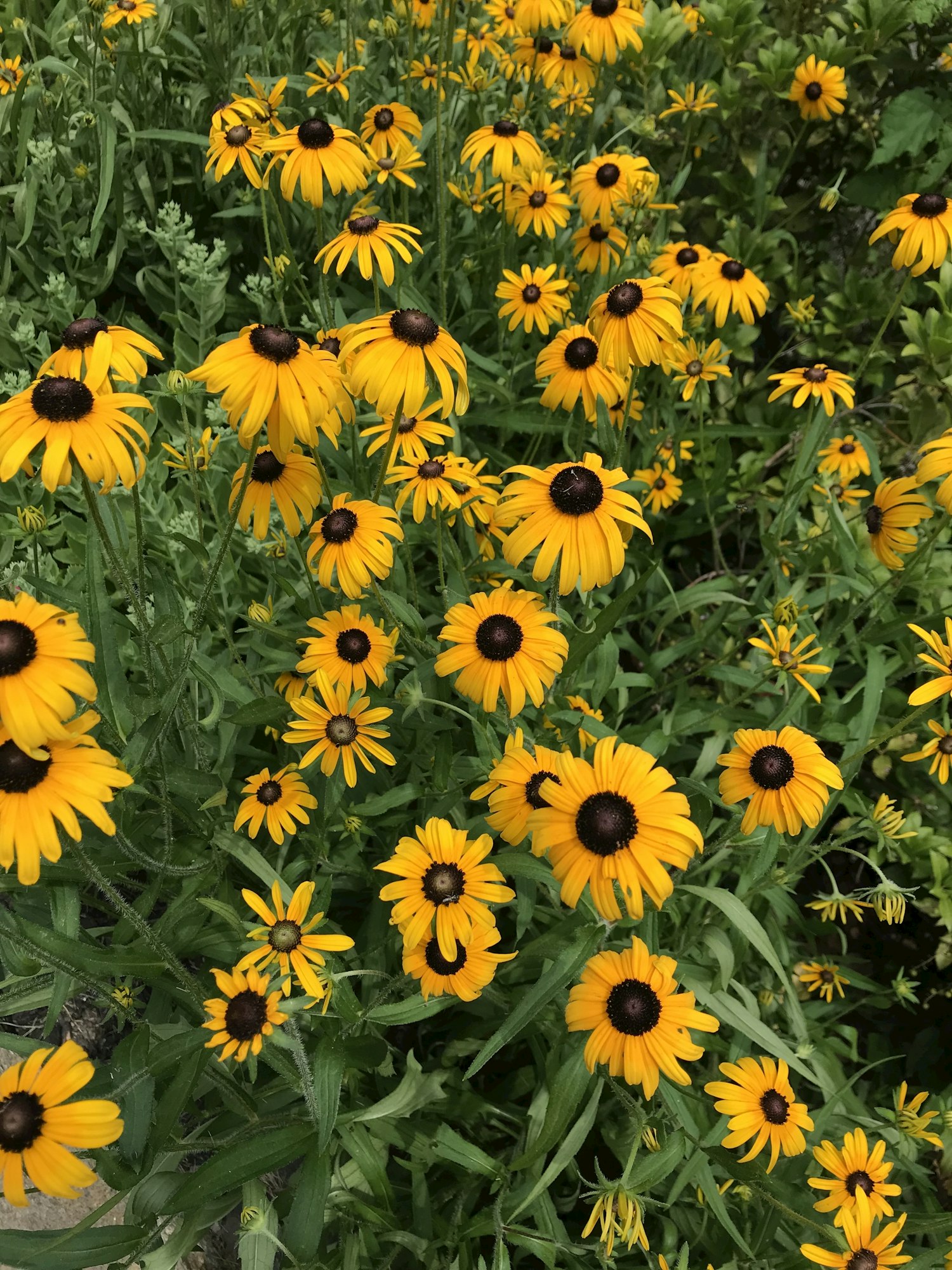
The bright, daisy-like flowers of Black-eyed Susan are a beacon for butterflies. Their yellow petals surrounding a dark center are not only striking but also a source of nectar.
27. Verbena (Verbena bonariensis)
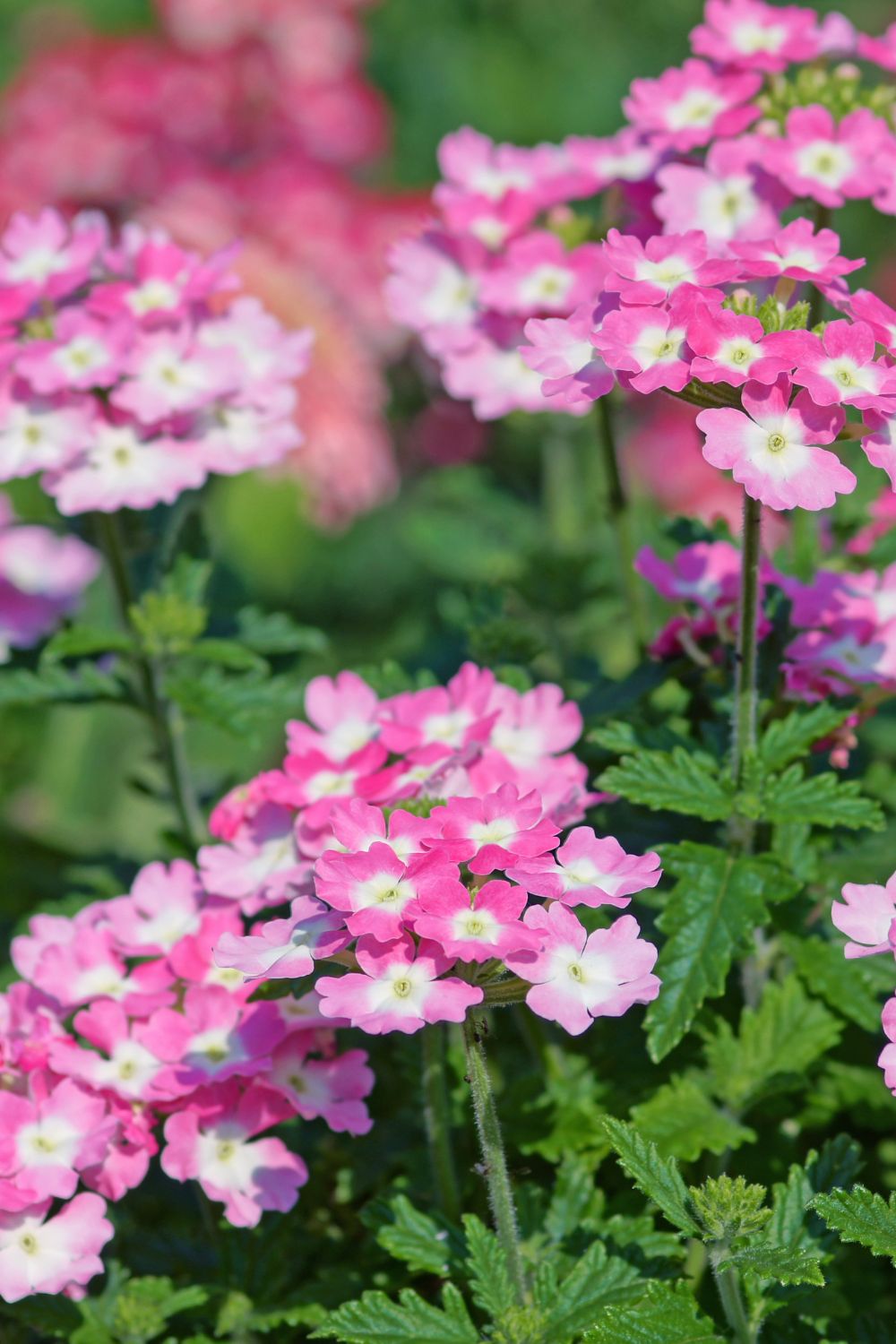
Tall and airy, Verbena adds height and color to the butterfly garden. Its small, clustered flowers are a preferred nectar source for many butterfly species.
28. Liatris (Liatris spicata)
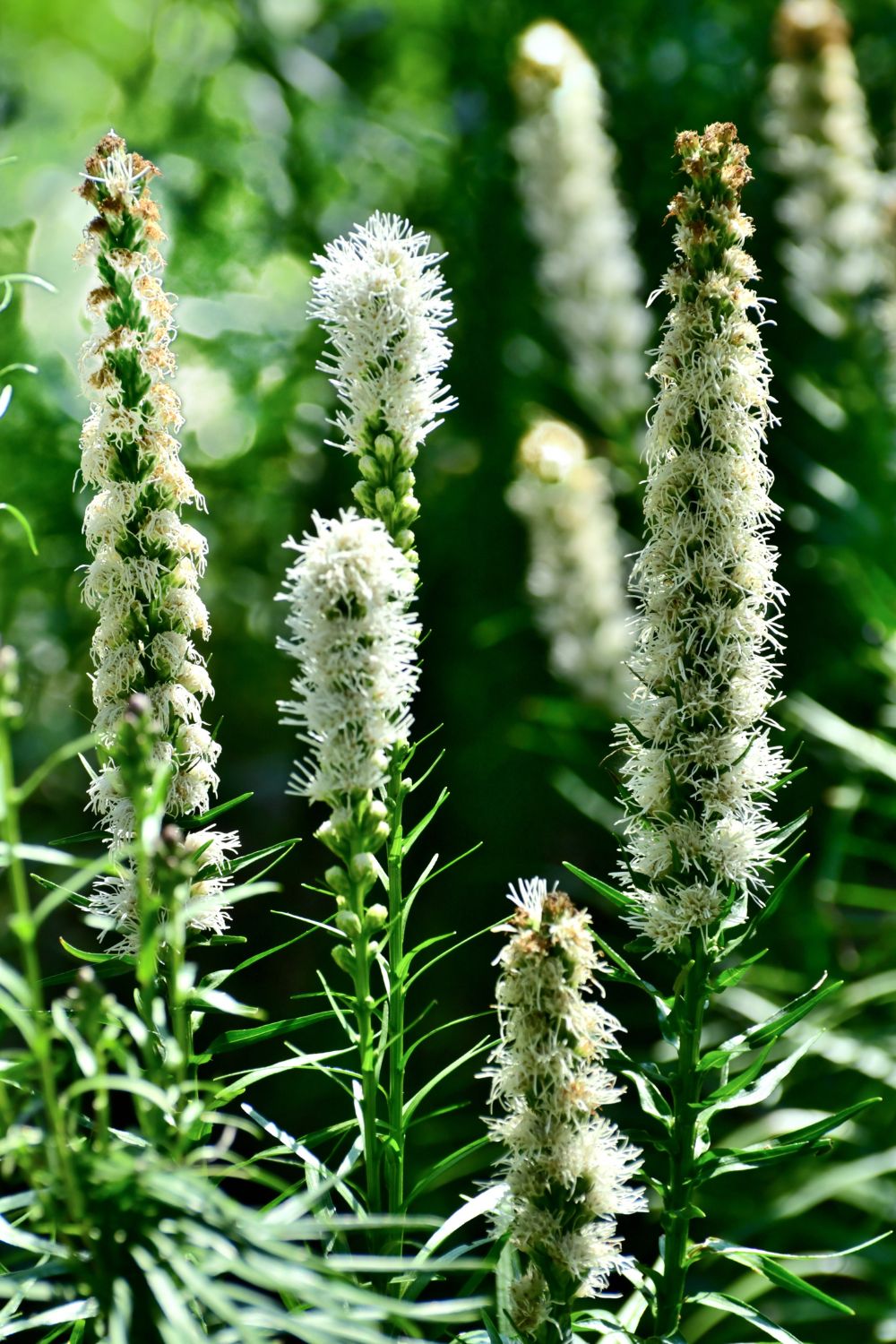
Also known as blazing star, Liatris features tall spikes of purple flowers that stand out in the garden. Its nectar and pollen attract butterflies and bees alike.
29. Marigolds (Tagetes spp.)
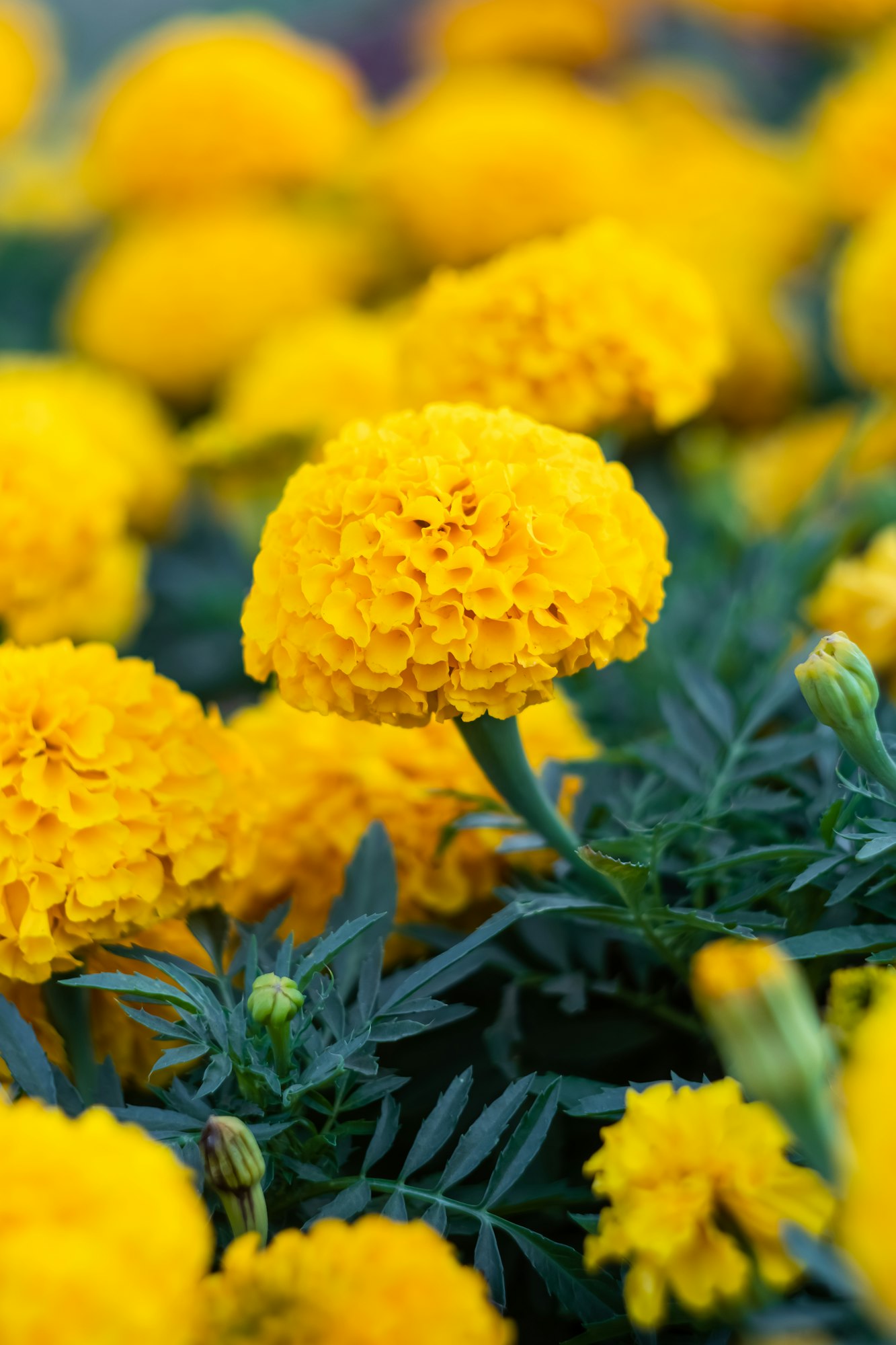
Marigolds are not only easy to grow but their bright orange, yellow, and red flowers are excellent for attracting butterflies. Their strong scent and vibrant colors make them an ideal choice for any garden.
30. Purple Coneflower (Echinacea purpurea)
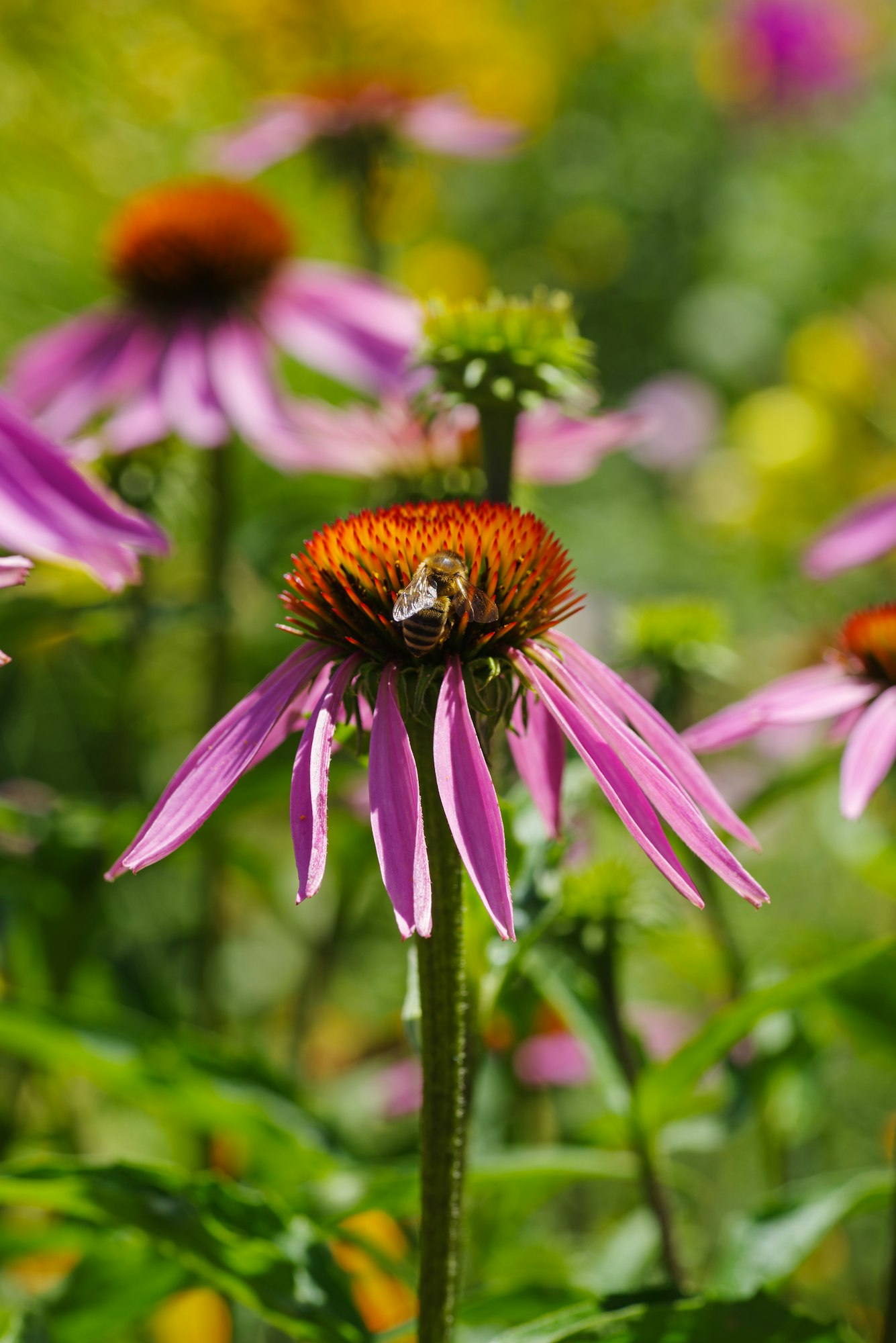
With its distinctive shape and pinkish-purple petals, the Purple Coneflower is a staple in the butterfly garden. It’s beloved by butterflies for its nectar and by gardeners for its hardiness and beauty.
Universal Pollinator Magnets
Planting a mix of these can offer a continuous buffet for a wide range of pollinators, enriching the garden’s biodiversity and beauty. List of Universal Pollinator-attracting Flowers.
31. Sage (Salvia spp.)
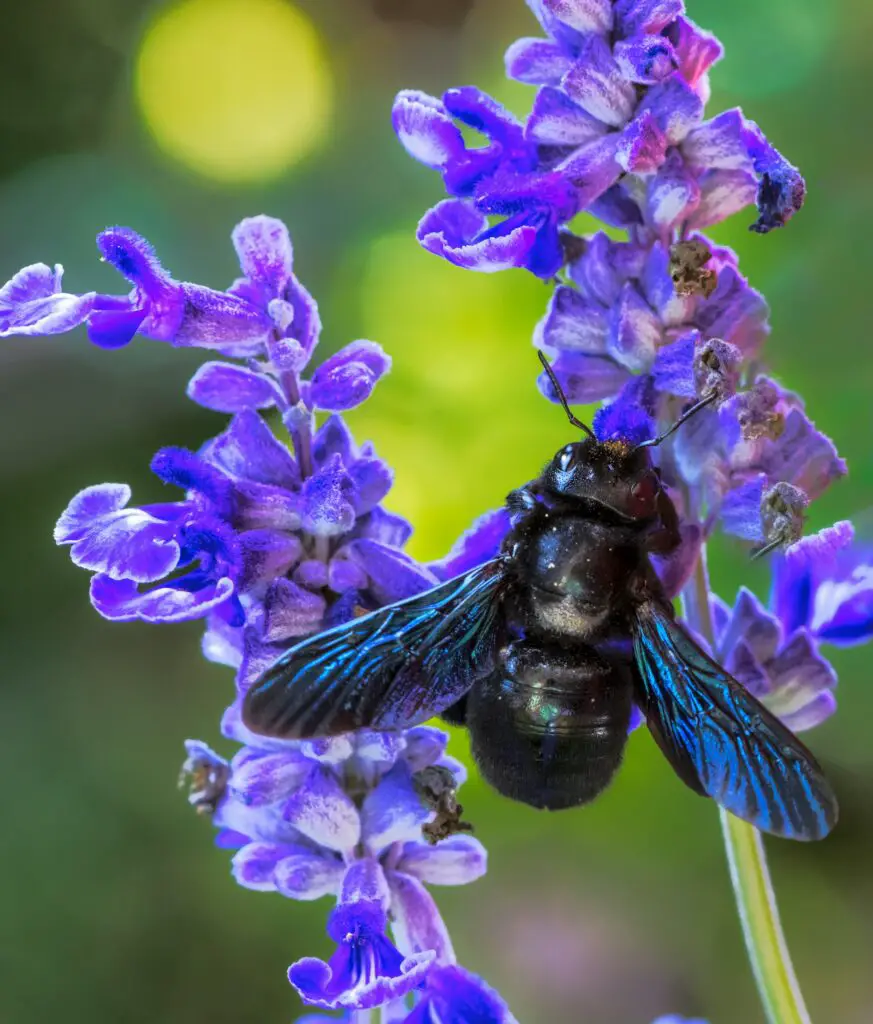
The striking flowers of Salvia come in various hues, including blues, purples, and reds, making them irresistible to hummingbirds, bees, and butterflies. Their abundant nectar supply supports a diverse array of pollinators throughout the blooming season.
32. Thyme (Thymus vulgaris)

Thyme blossoms with tiny, aromatic flowers that attract bees and butterflies with their nectar, while the plant’s low-growing habit also accommodates ground-feeding pollinators and provides a picturesque ground cover.
33. Oregano (Origanum vulgare)
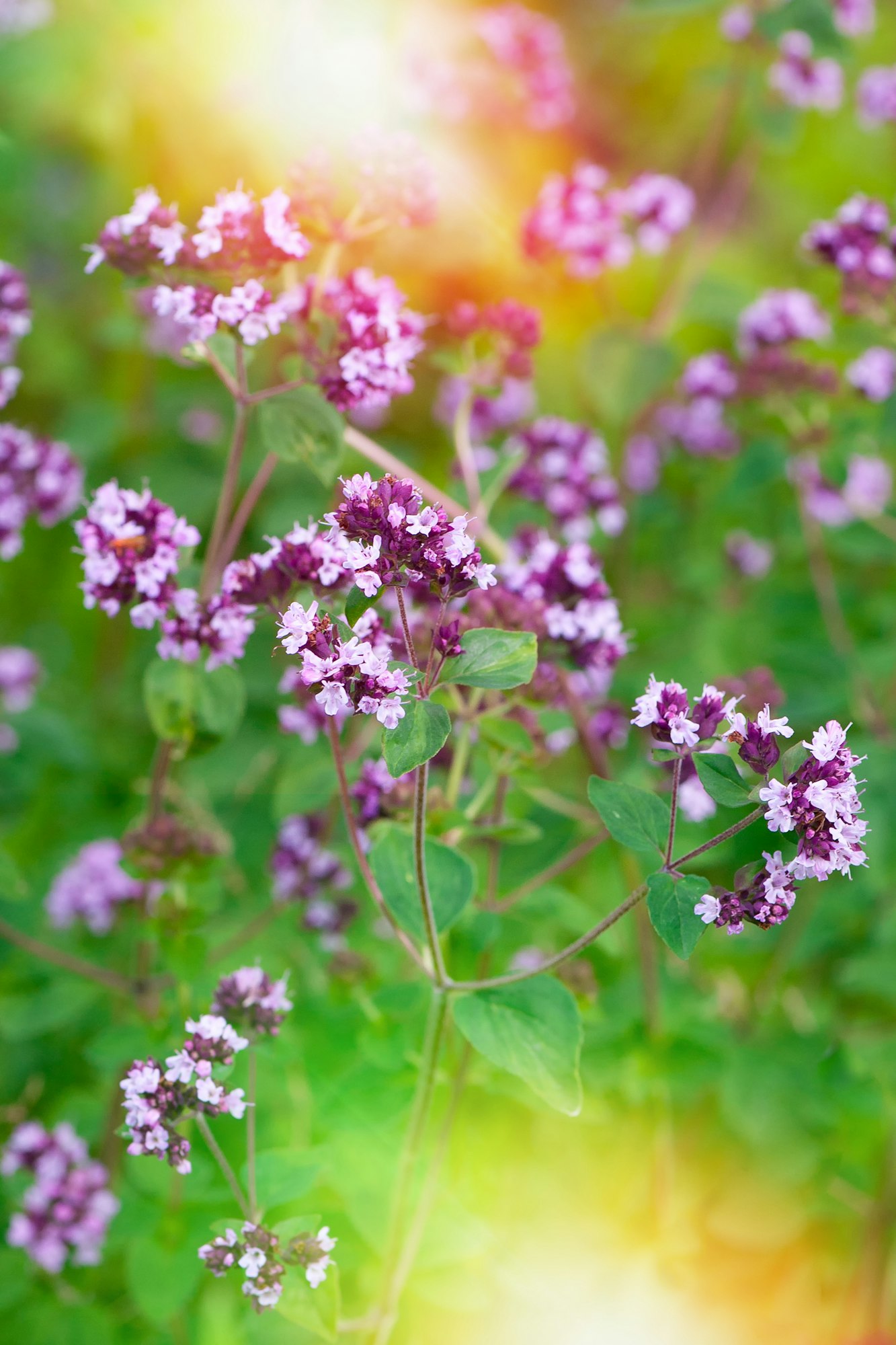
When allowed to flower, oregano’s tiny, clustered blooms become a hot spot for bees and butterflies. Its subtle fragrance and dense flower spikes also draw in hummingbirds, adding to the herb’s culinary appeal.
34. Mint (Mentha spp.)

Mint’s prolific flowering habit and potent scent attract a wide range of pollinators. Its flowers provide nectar for bees and butterflies, while the plant’s vigorous growth ensures there’s plenty to go around.
35. Rosemary (Rosmarinus officinalis)
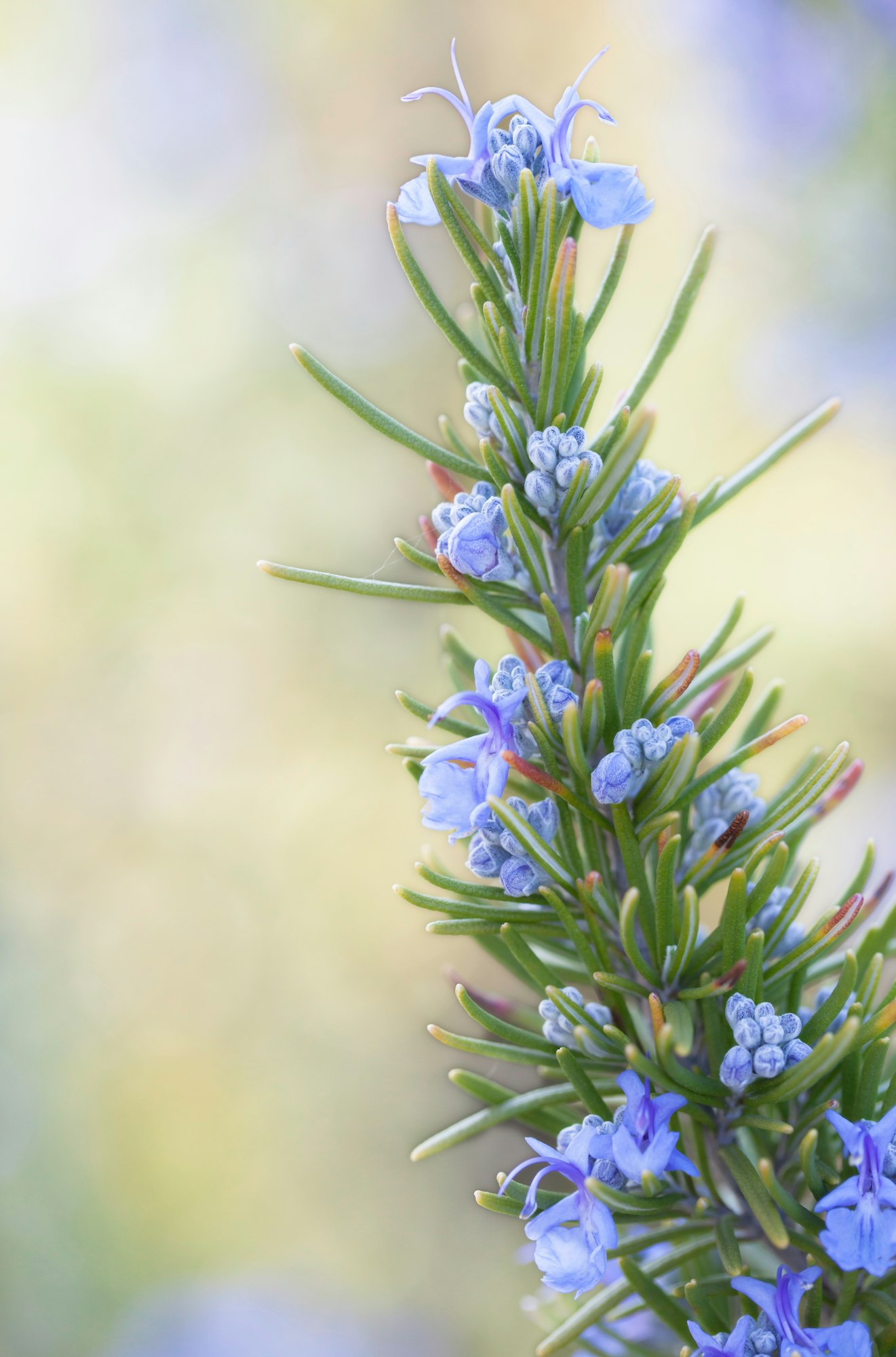
The delicate, blue flowers of rosemary are a favorite among bees, and their dense clusters make an attractive target for butterflies and hummingbirds. This drought-tolerant herb is both practical and pollinator-friendly.
36. Anise Hyssop (Agastache foeniculum)
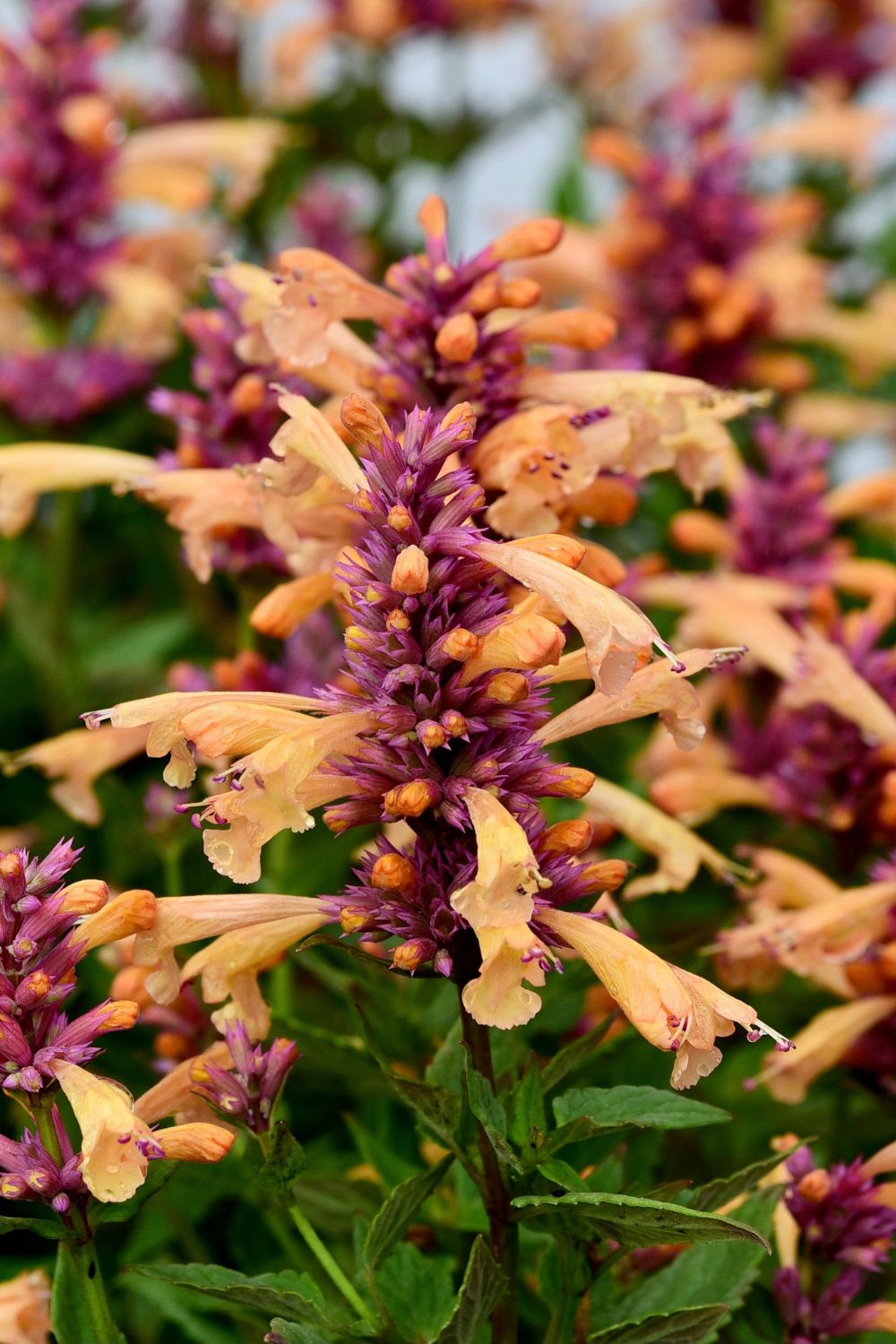
With its tall spikes of lavender to purple flowers, anise hyssop is a magnet for bees, butterflies, and hummingbirds. Its licorice-scented leaves and flowers add a sensory delight to the garden.
37. Snapdragon (Antirrhinum majus)
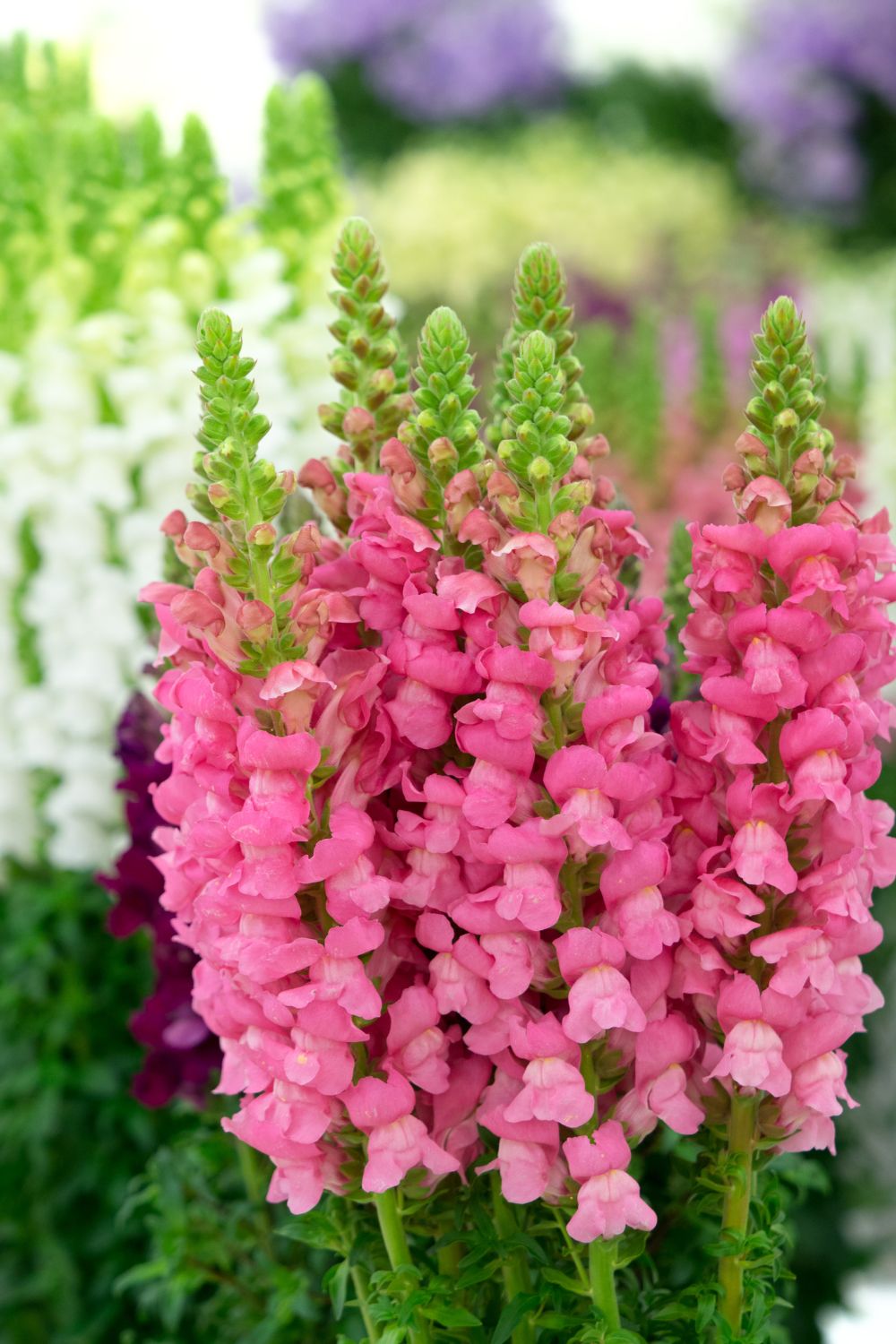
Snapdragon’s unique, tubular flowers appeal to bees and butterflies with their accessible nectar, and their bright colors attract hummingbirds. Their varied heights add interest and depth to garden beds.
38. Hollyhock (Alcea rosea)
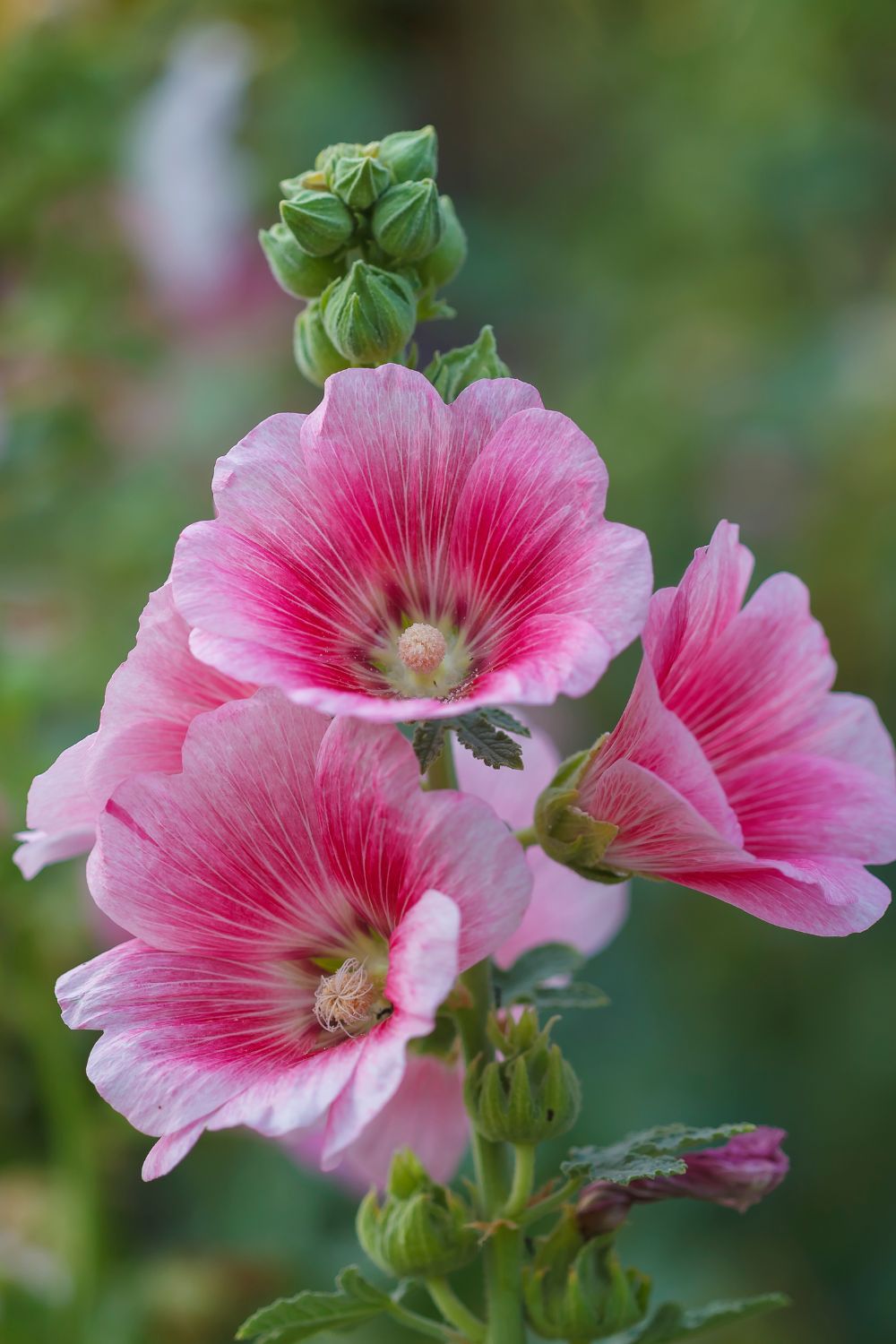
The towering spikes of hollyhocks, adorned with large, open blooms, are particularly enticing to butterflies and bees. Their height also makes them visible to hummingbirds, adding vertical drama to the garden.
39. Dahlia
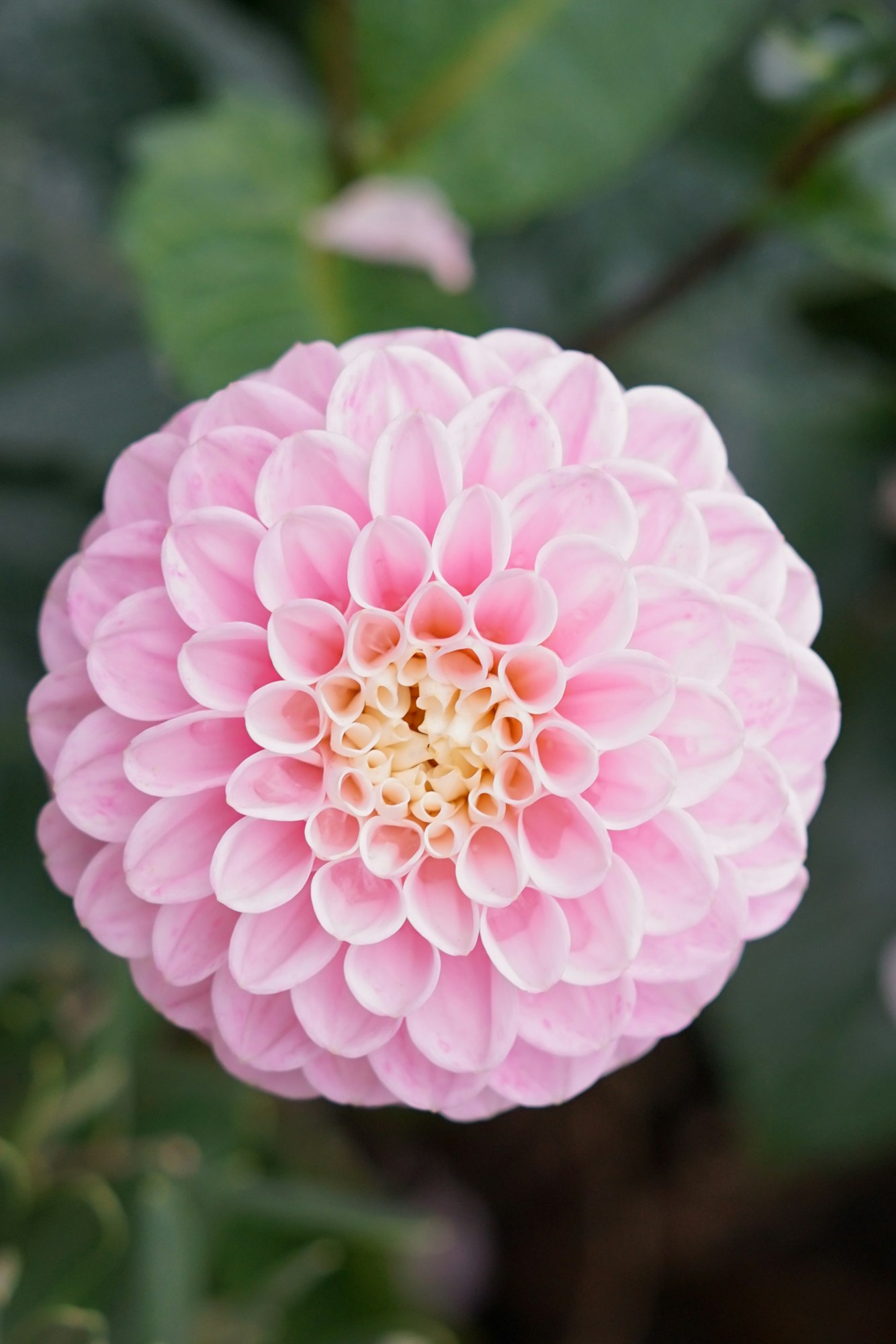
Dahlias boasts a broad spectrum of colors and shapes, offering something for every pollinator. Their layered petals provide landing spots for butterflies and bees, while their vibrant colors attract hummingbirds.
40. Globe Thistle (Echinops ritro)
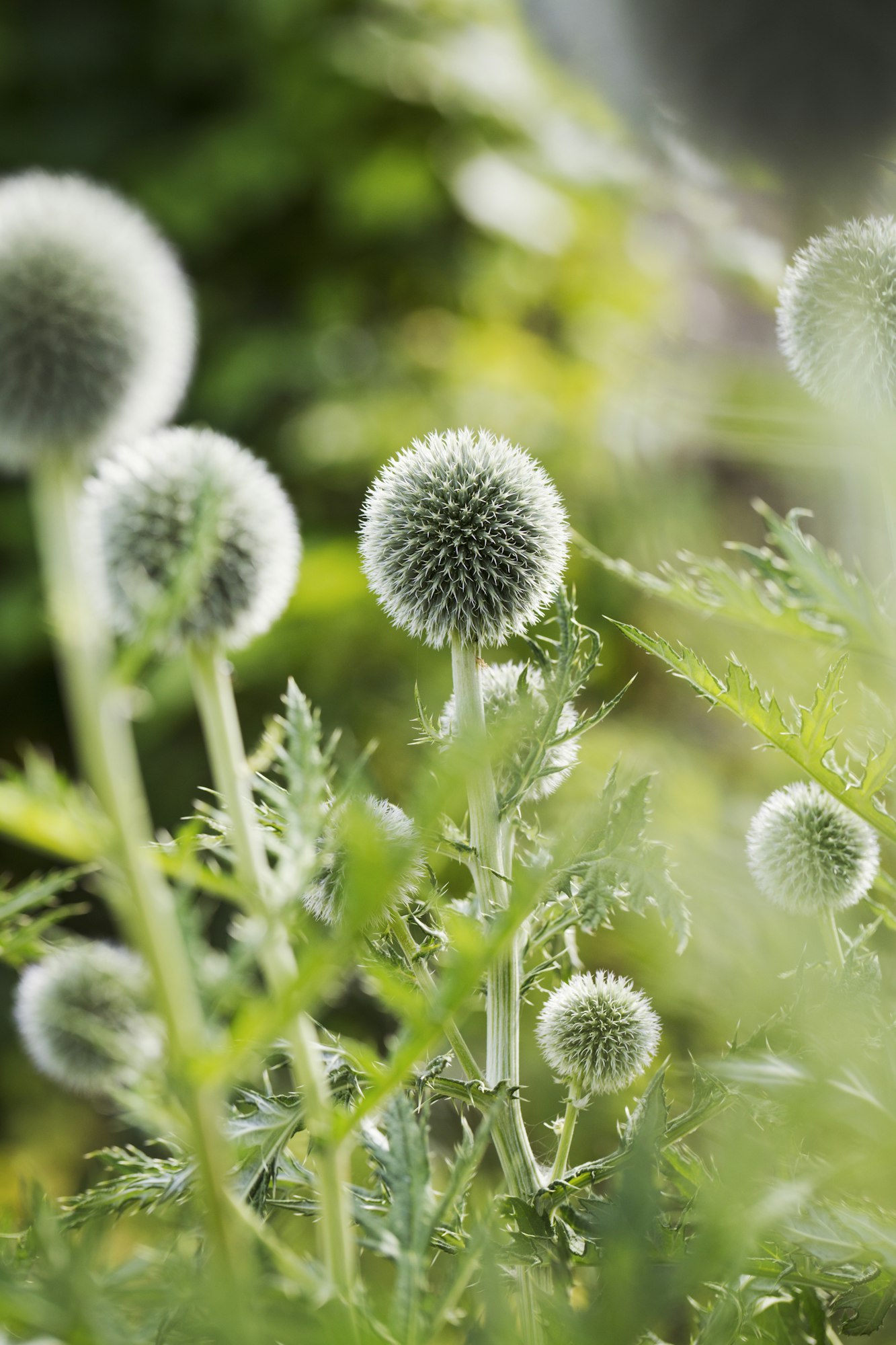
Replacing the sunflower, the globe thistle stands out with its unique, spherical blue flowers. Bees and butterflies are attracted to its distinct shape and nectar, making it a visually striking and beneficial addition to any pollinator garden.





